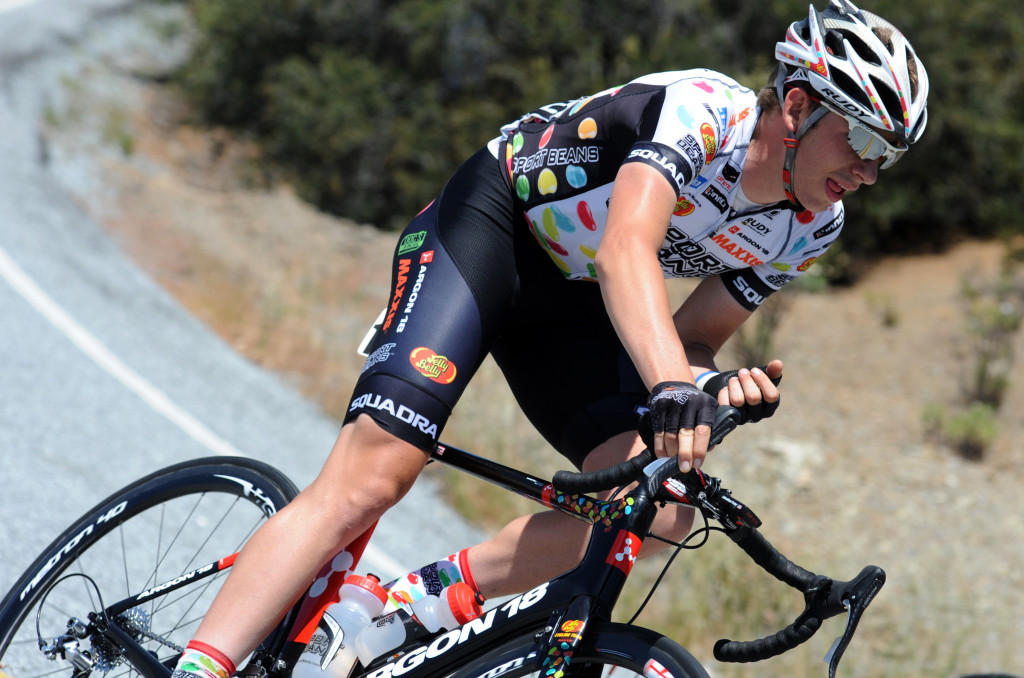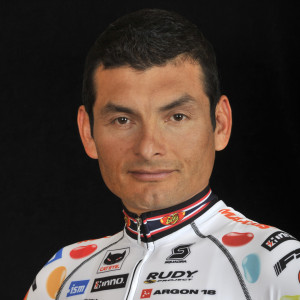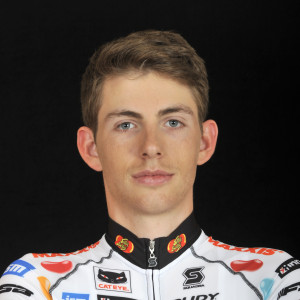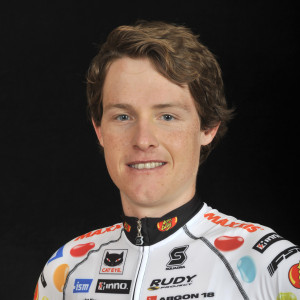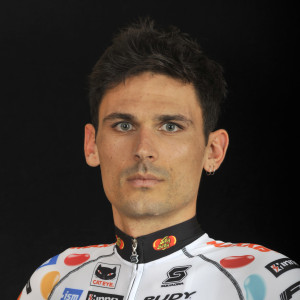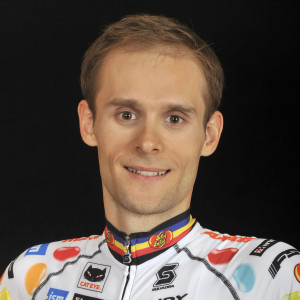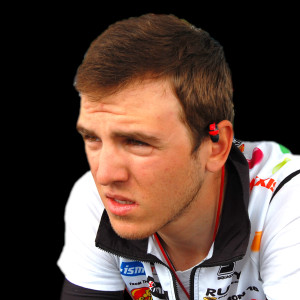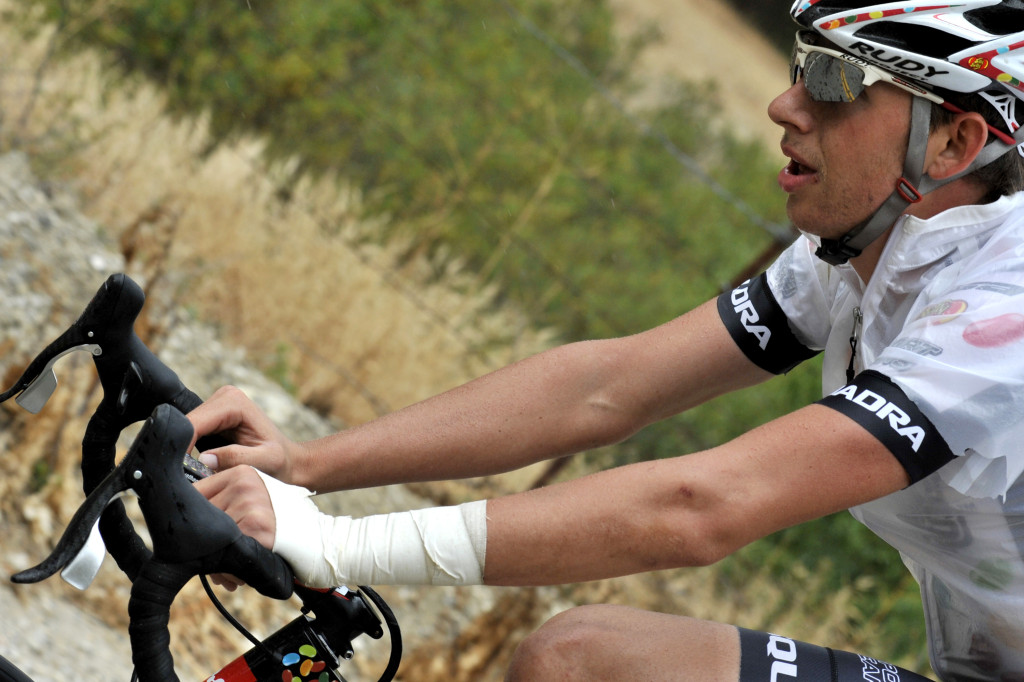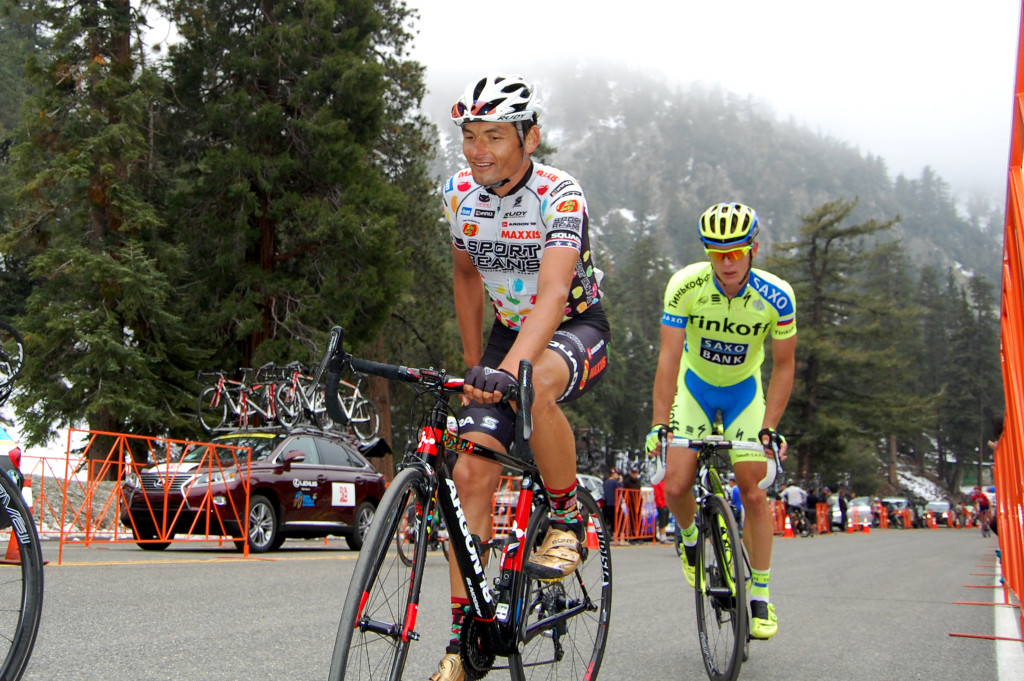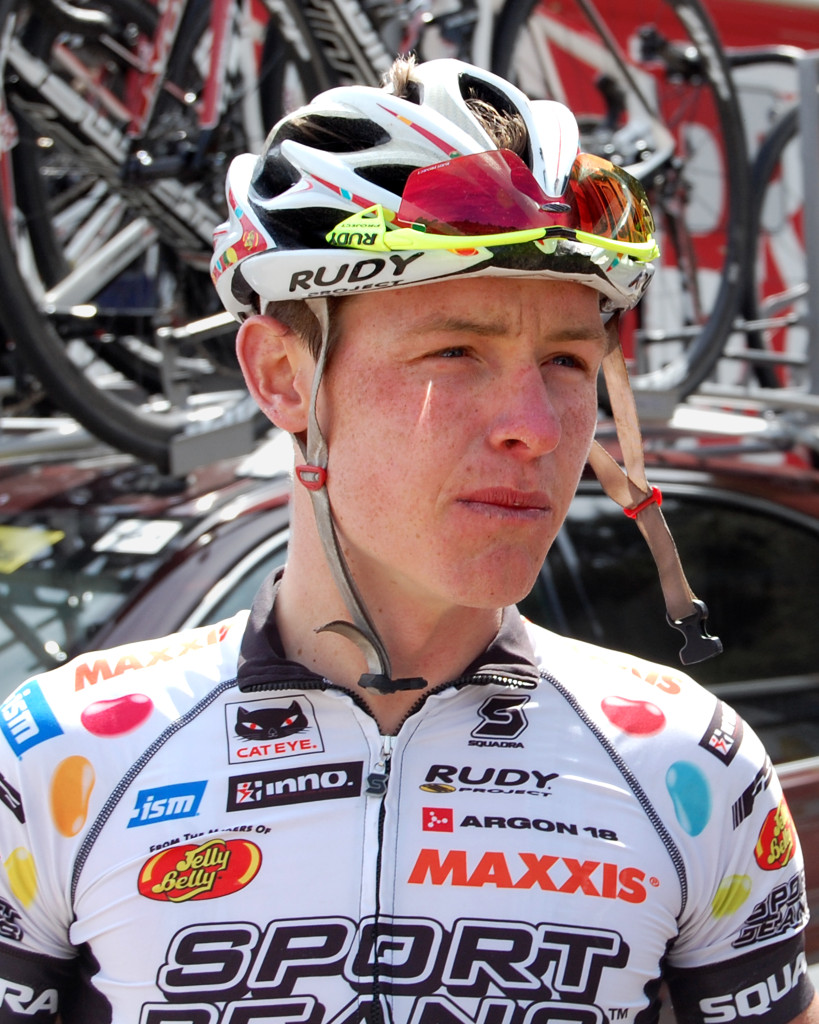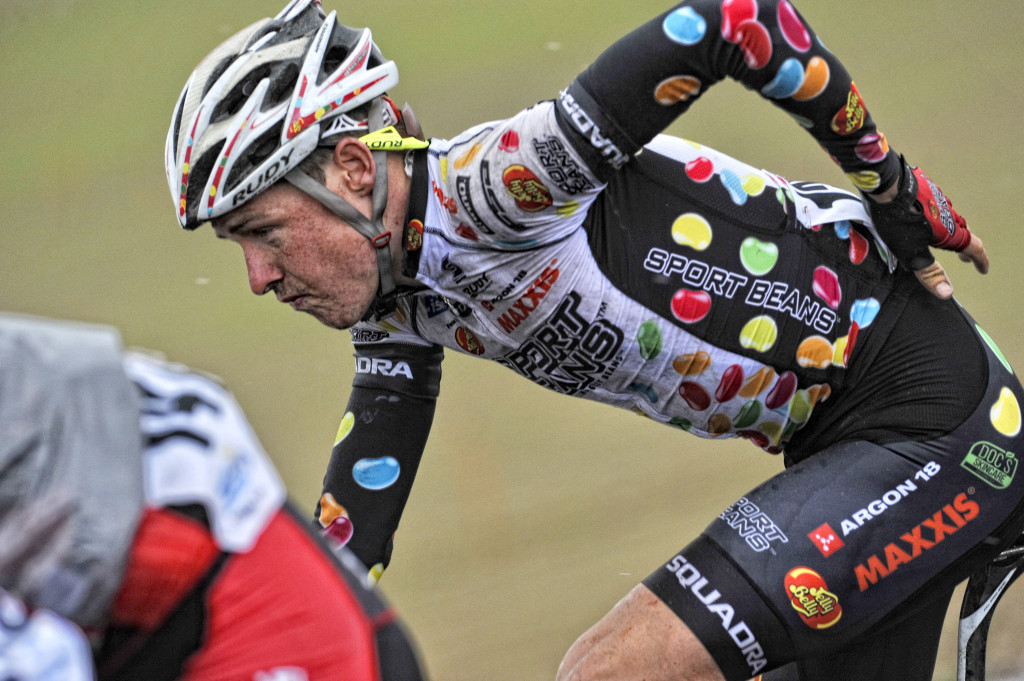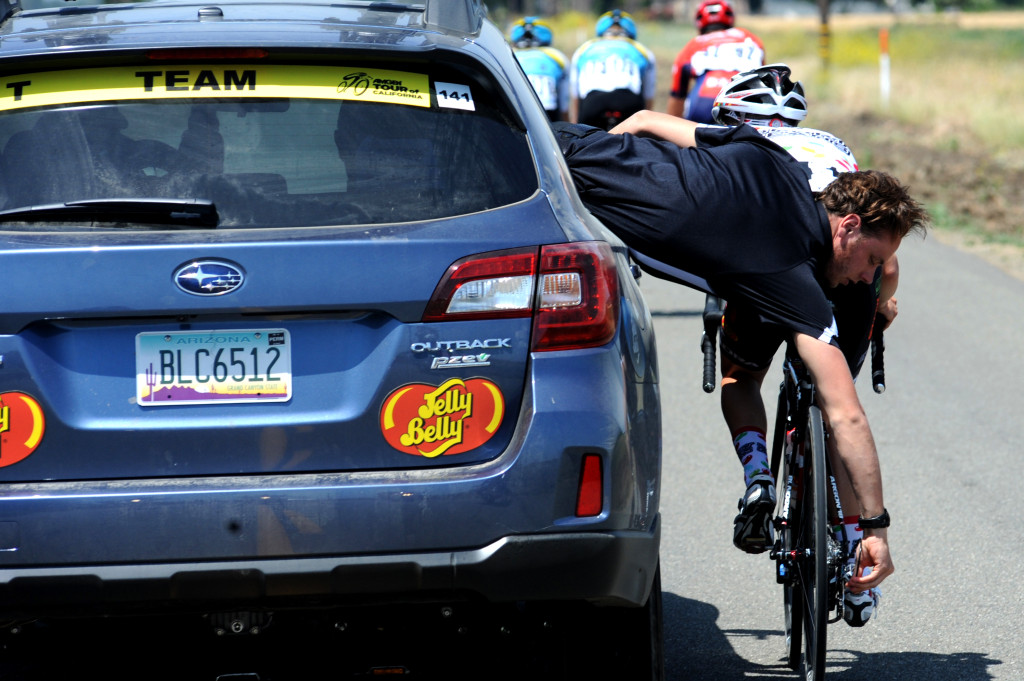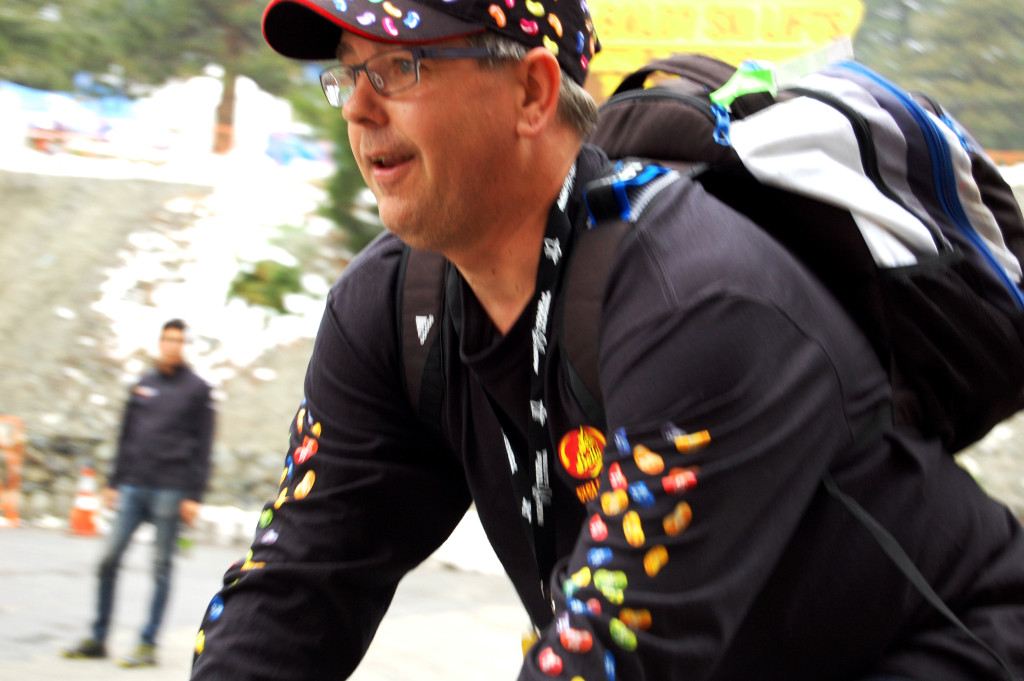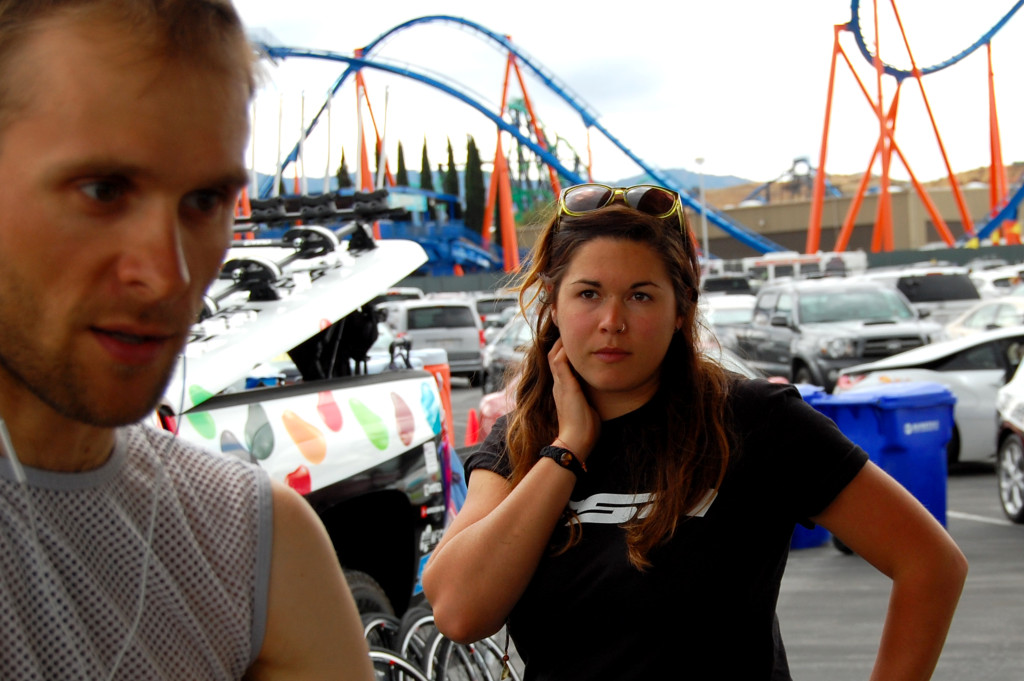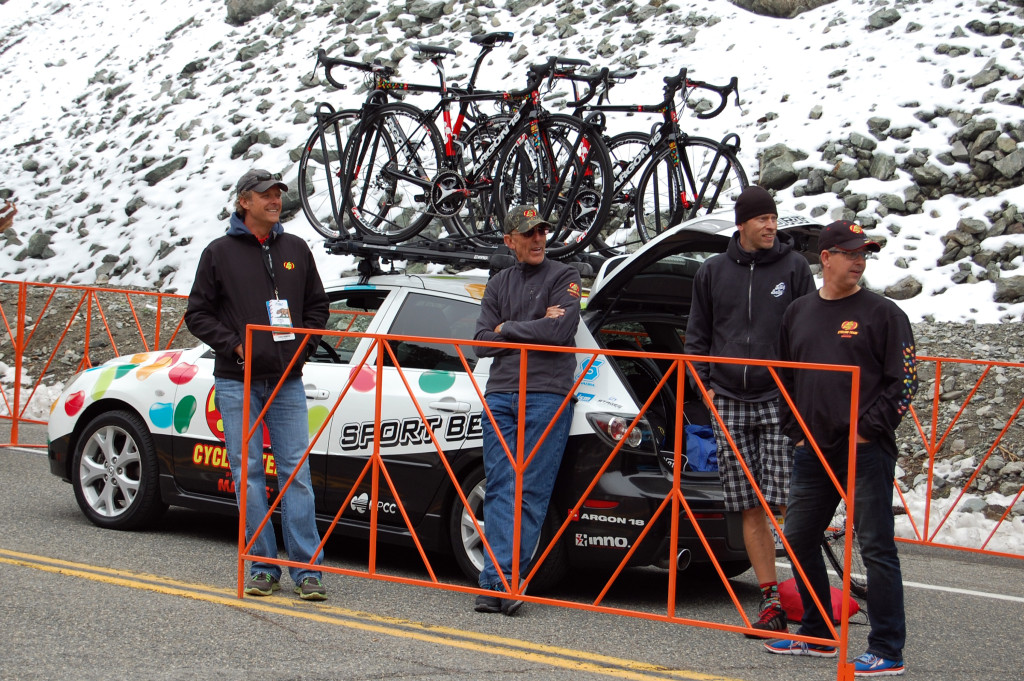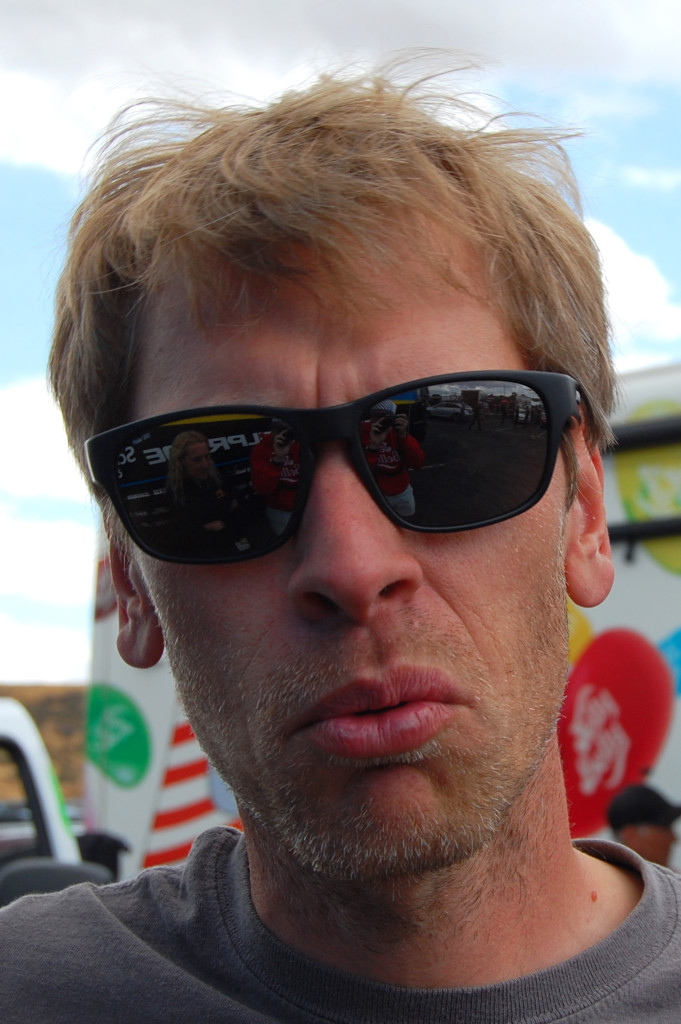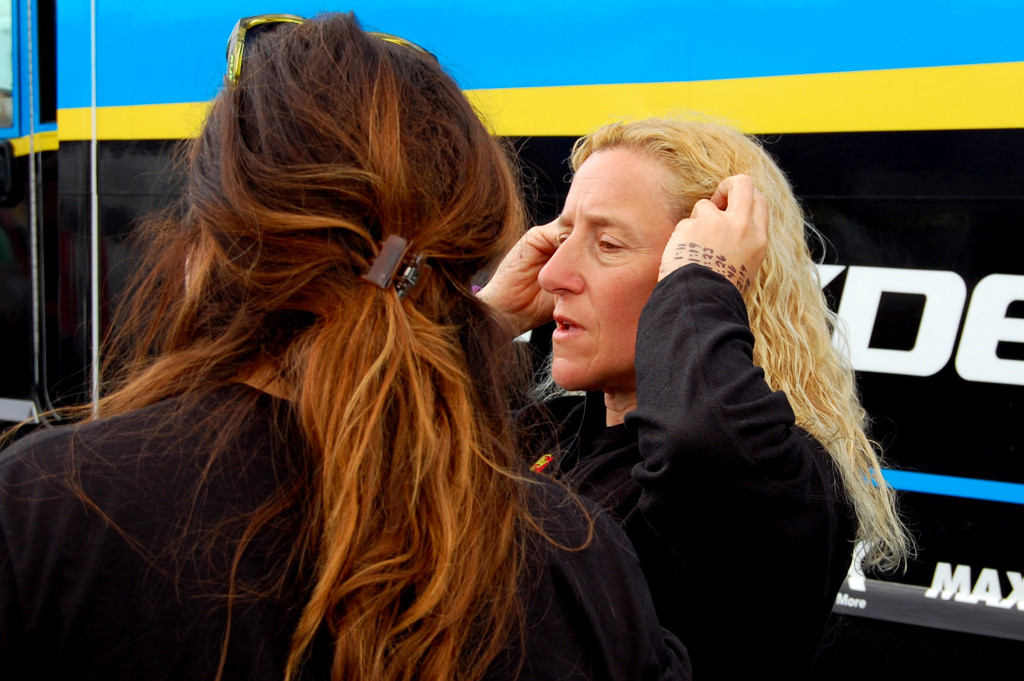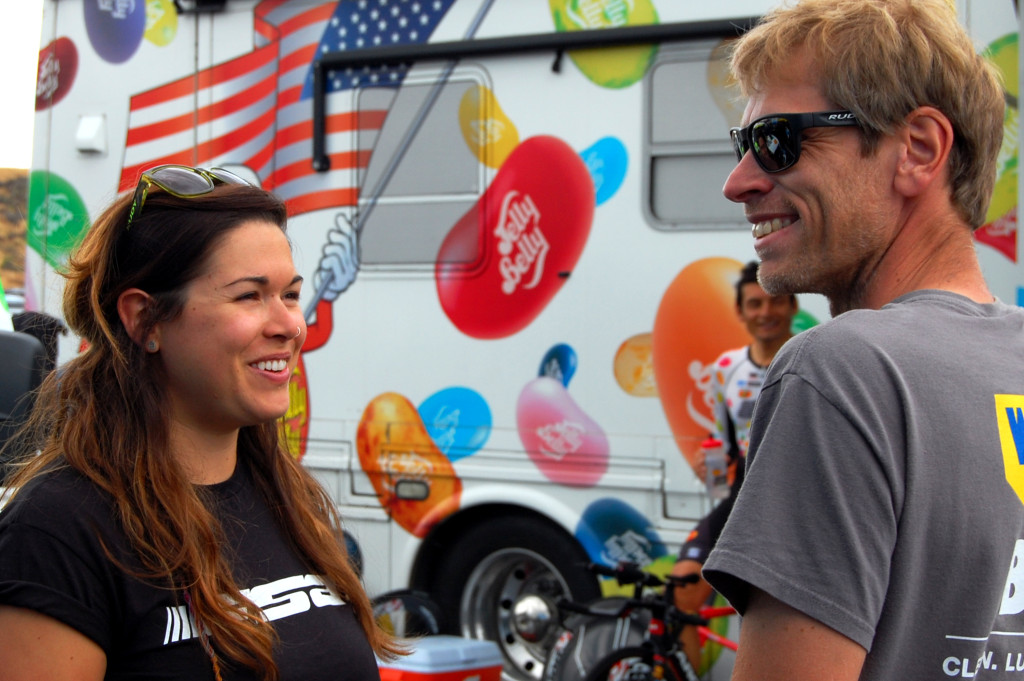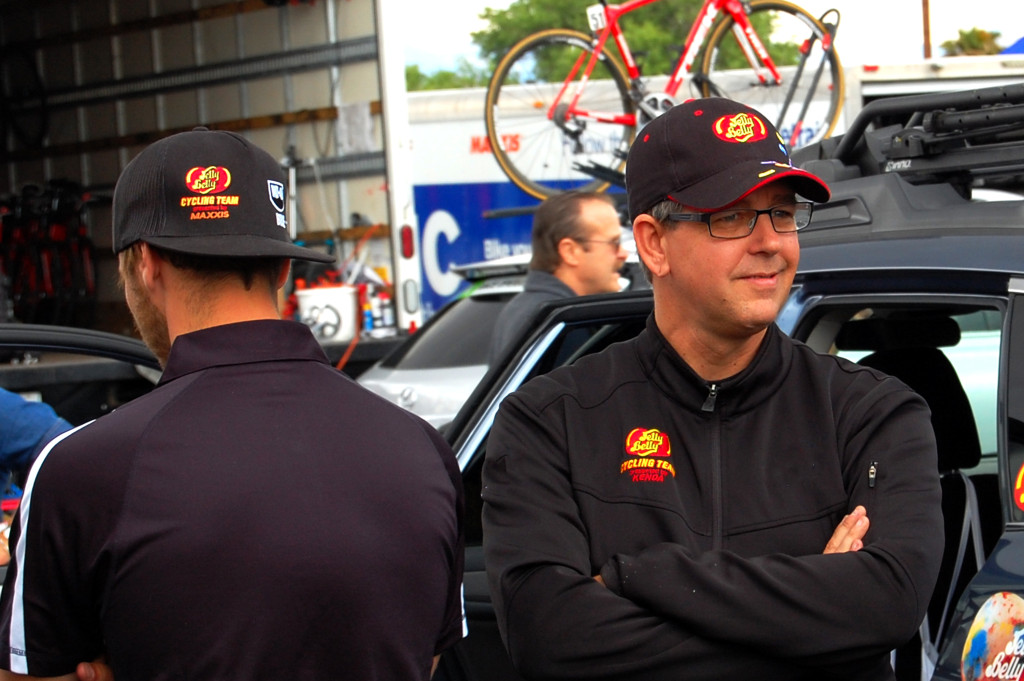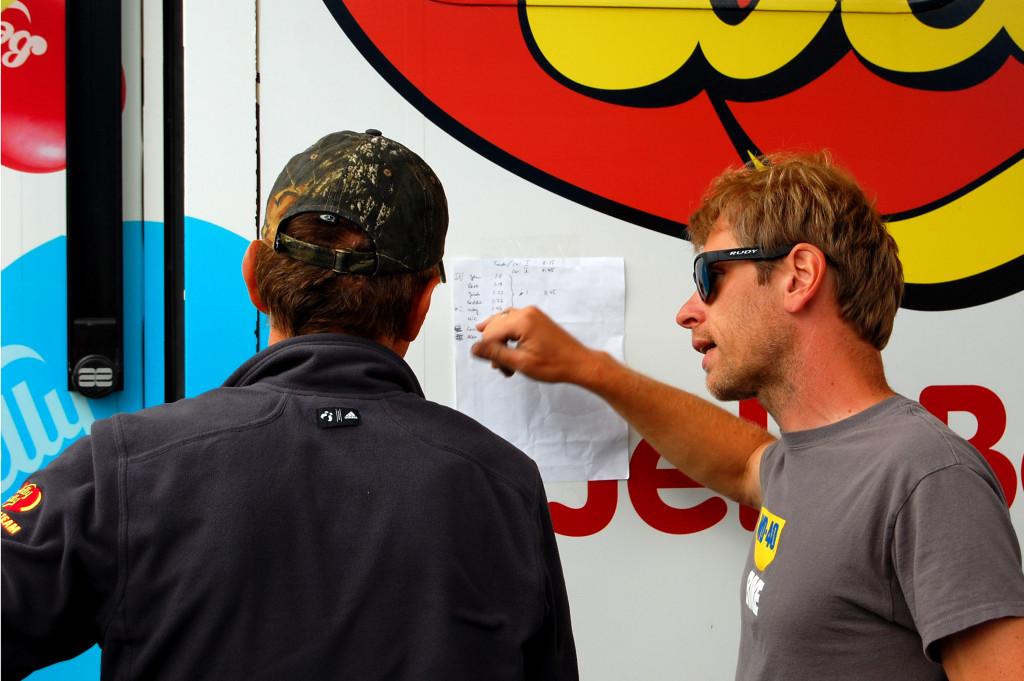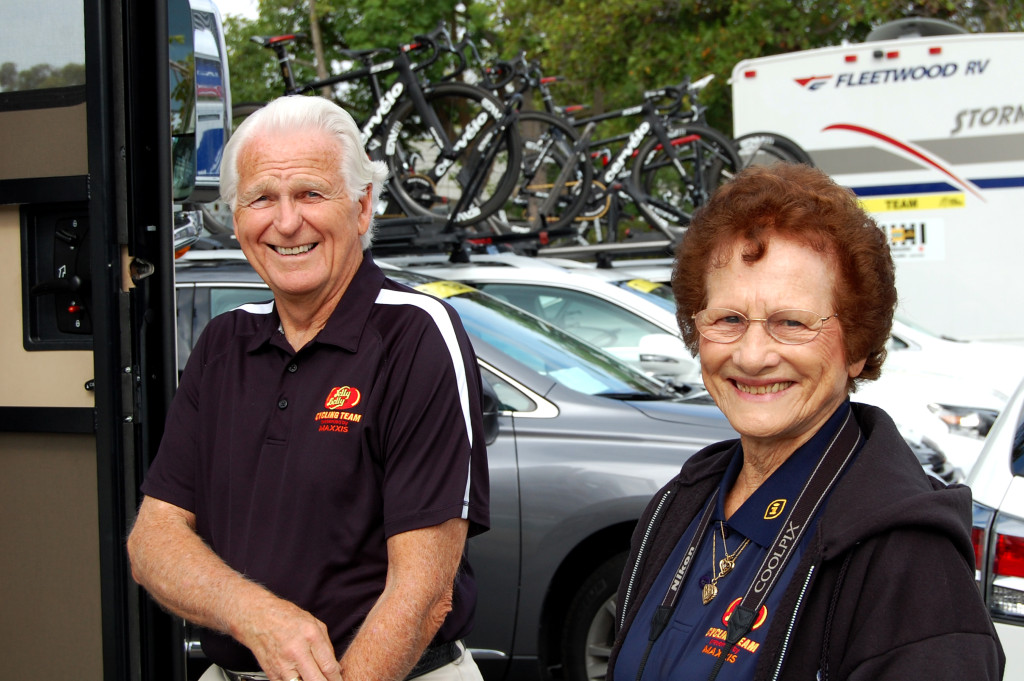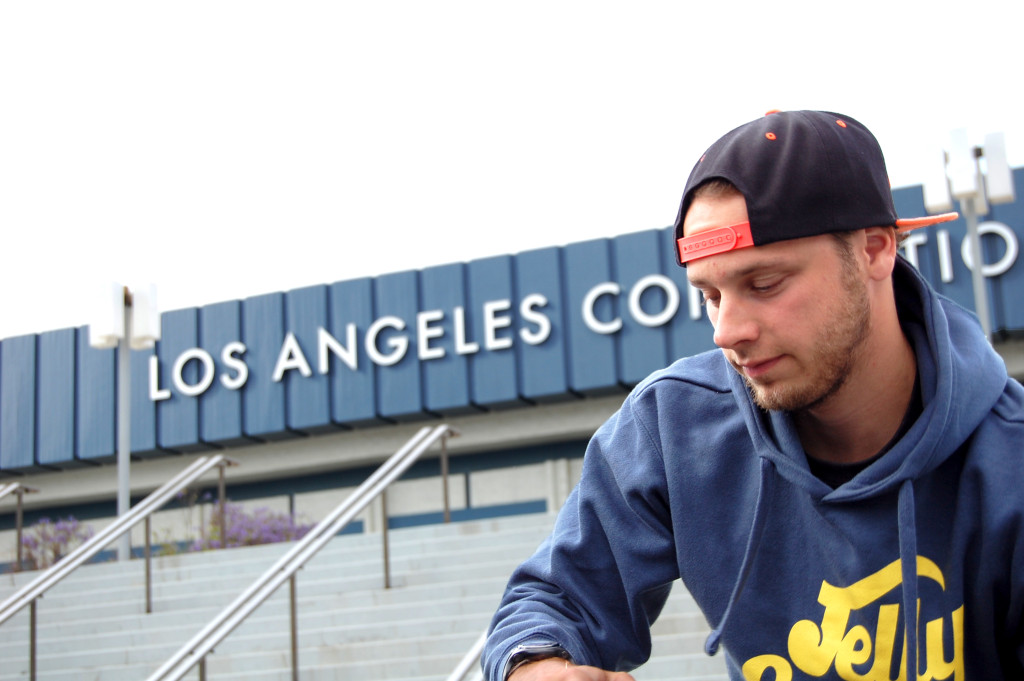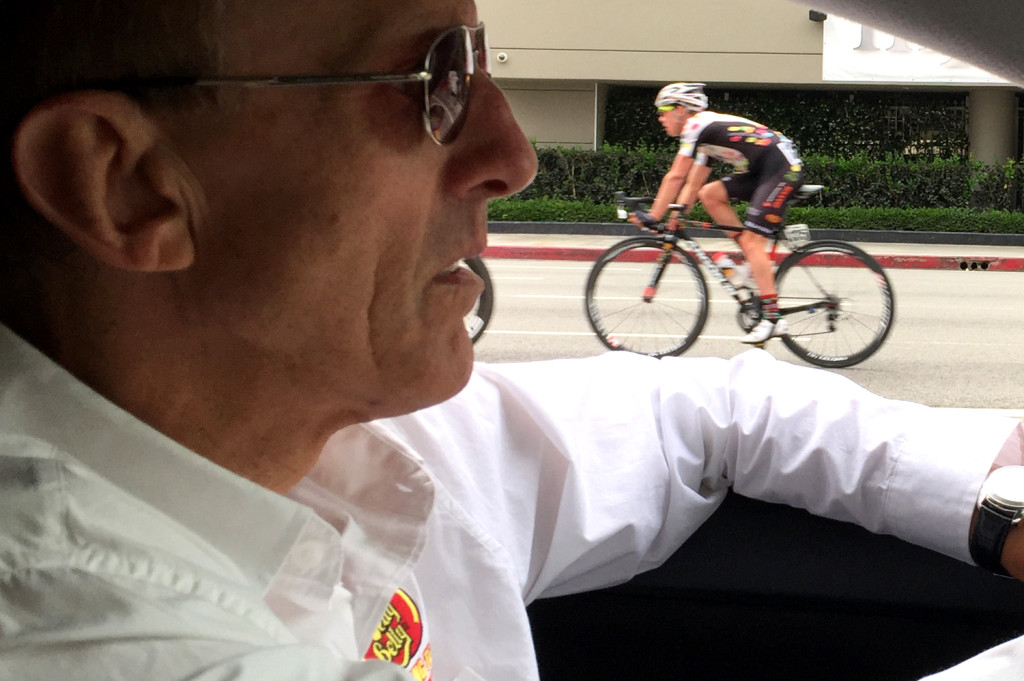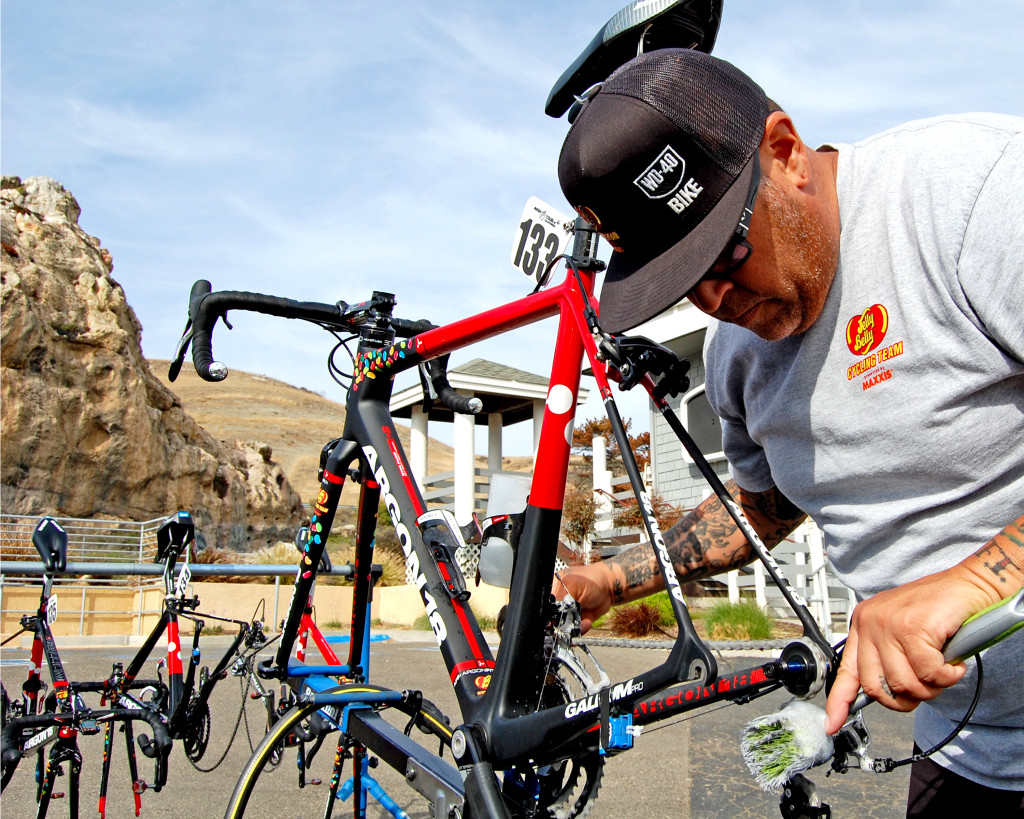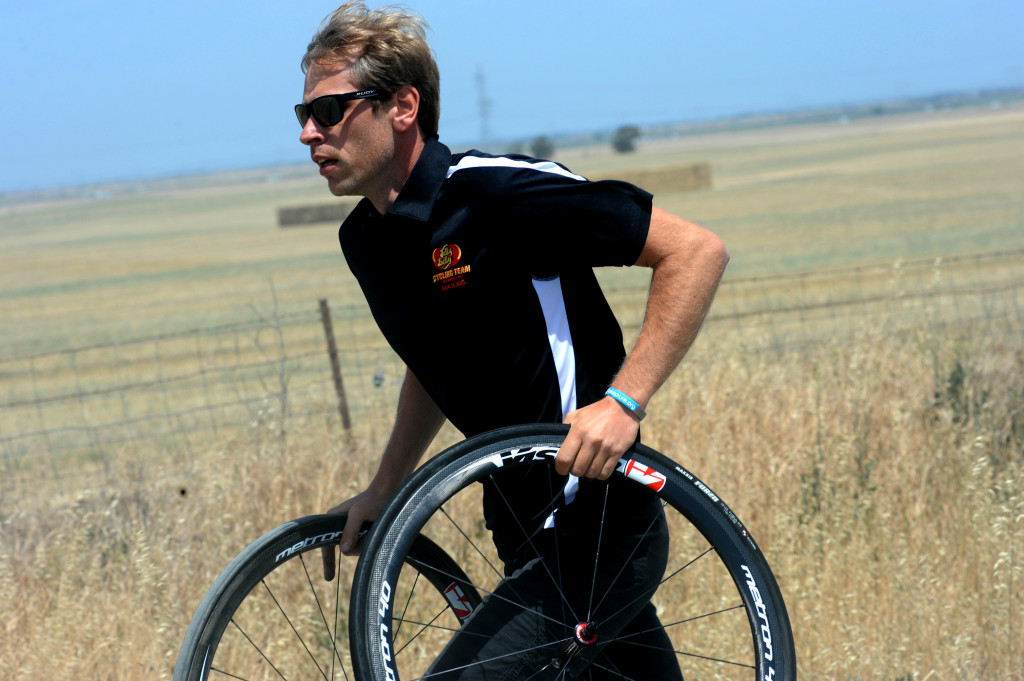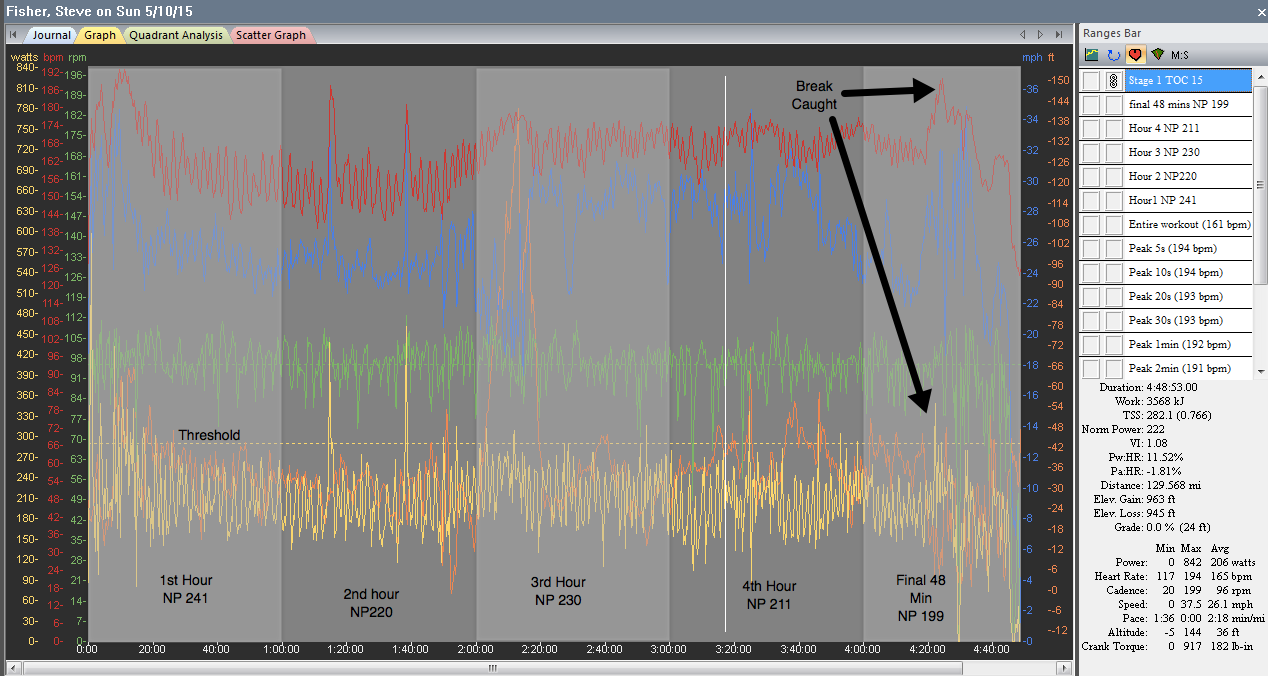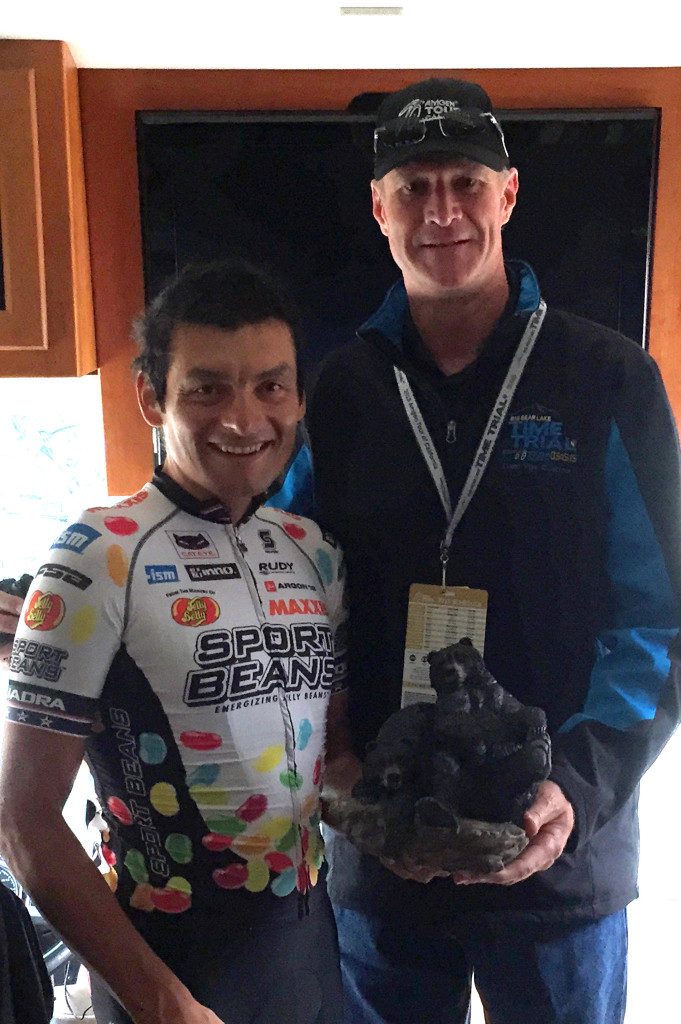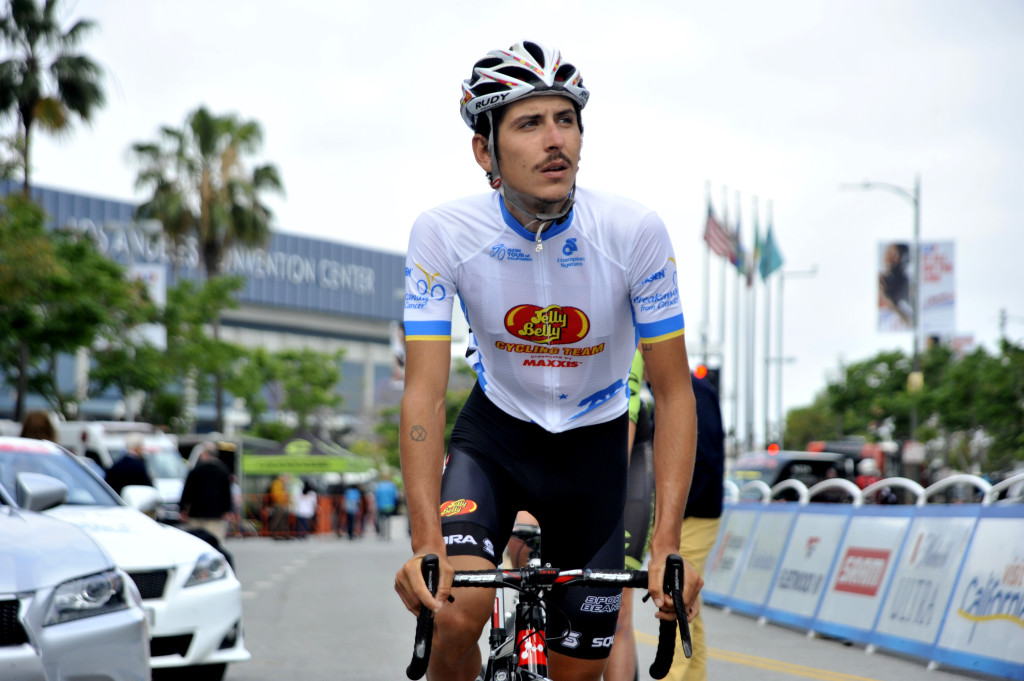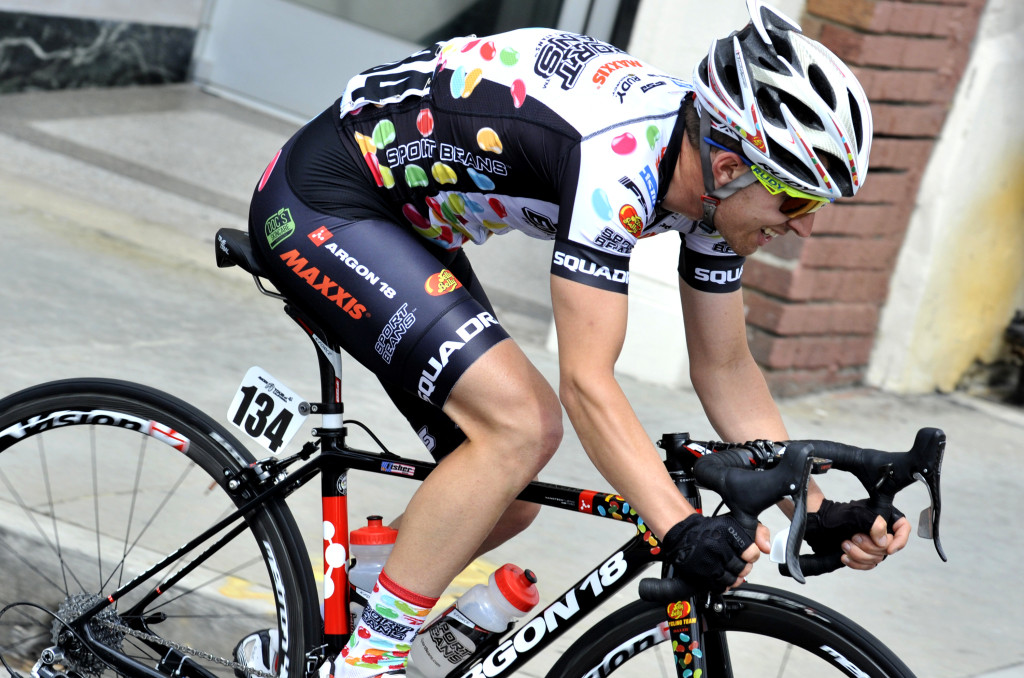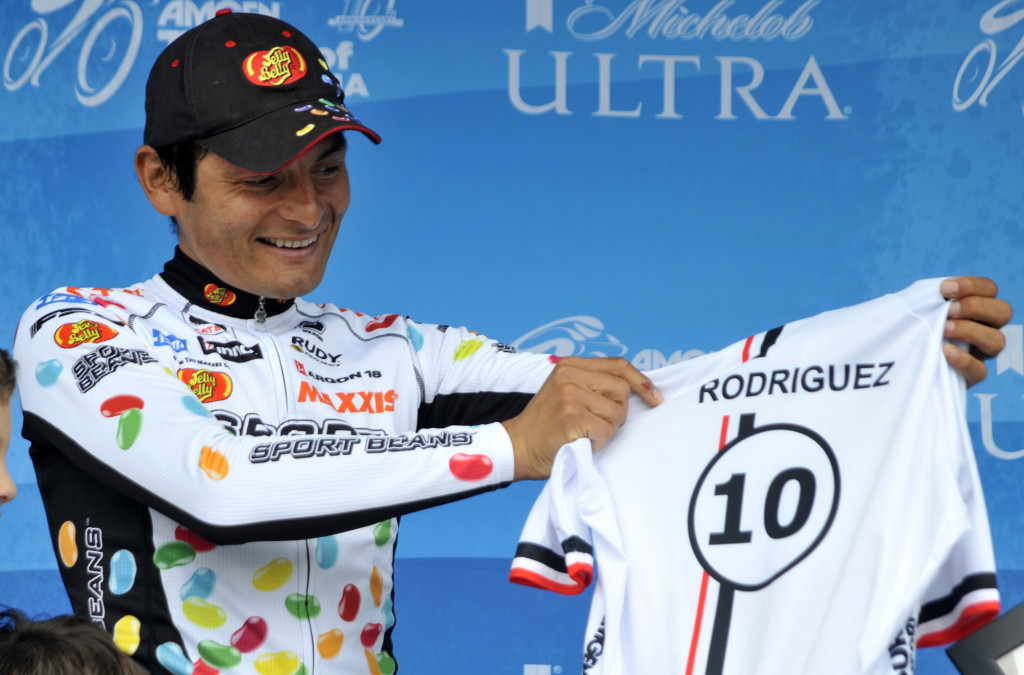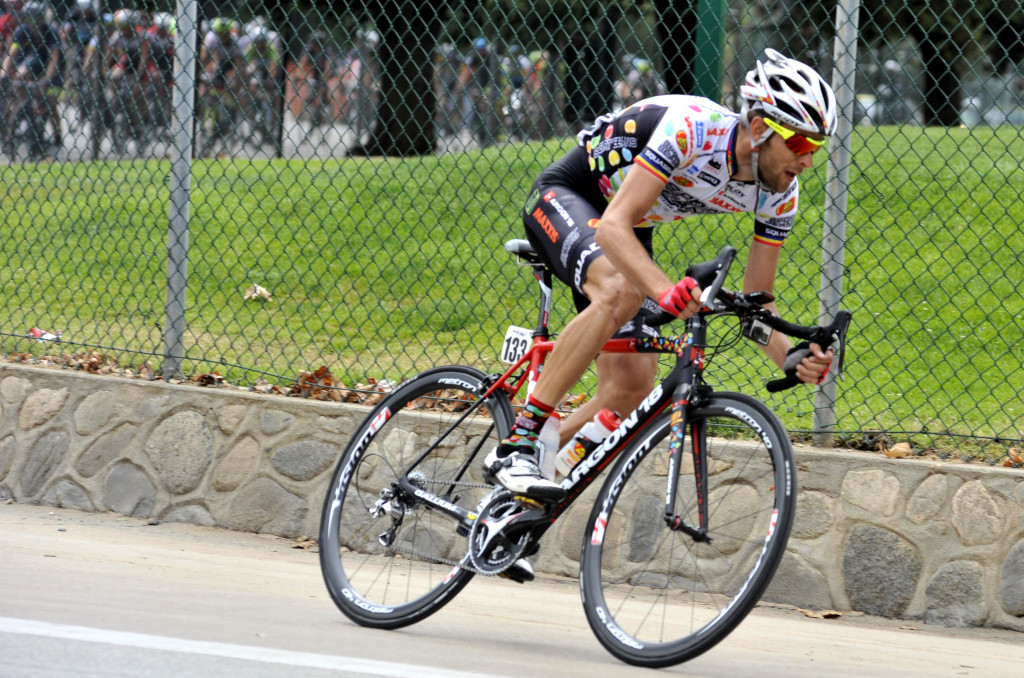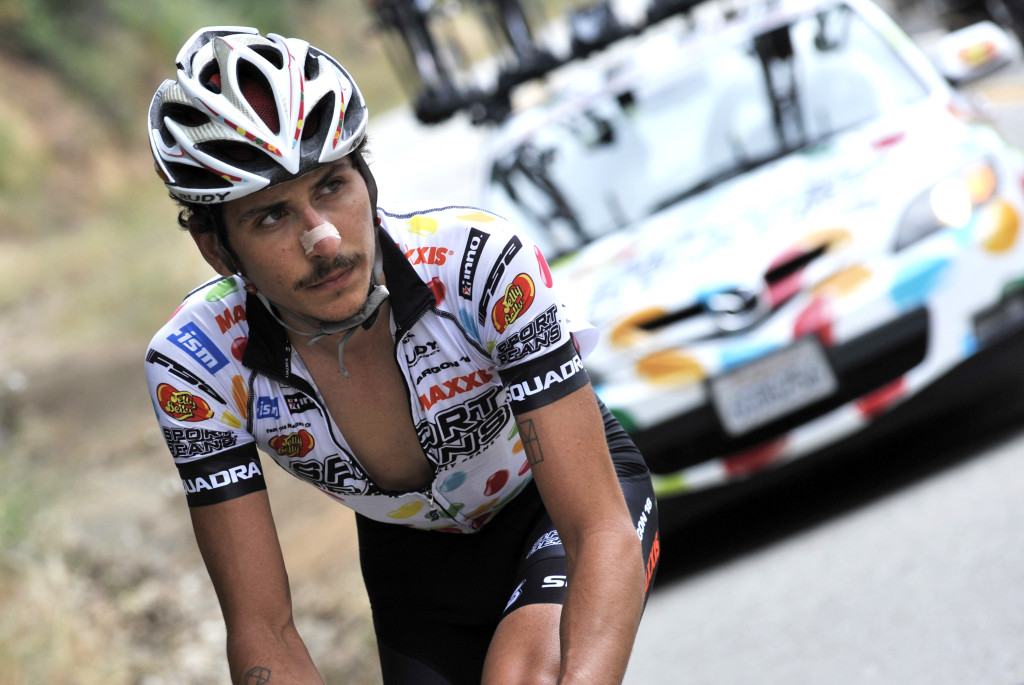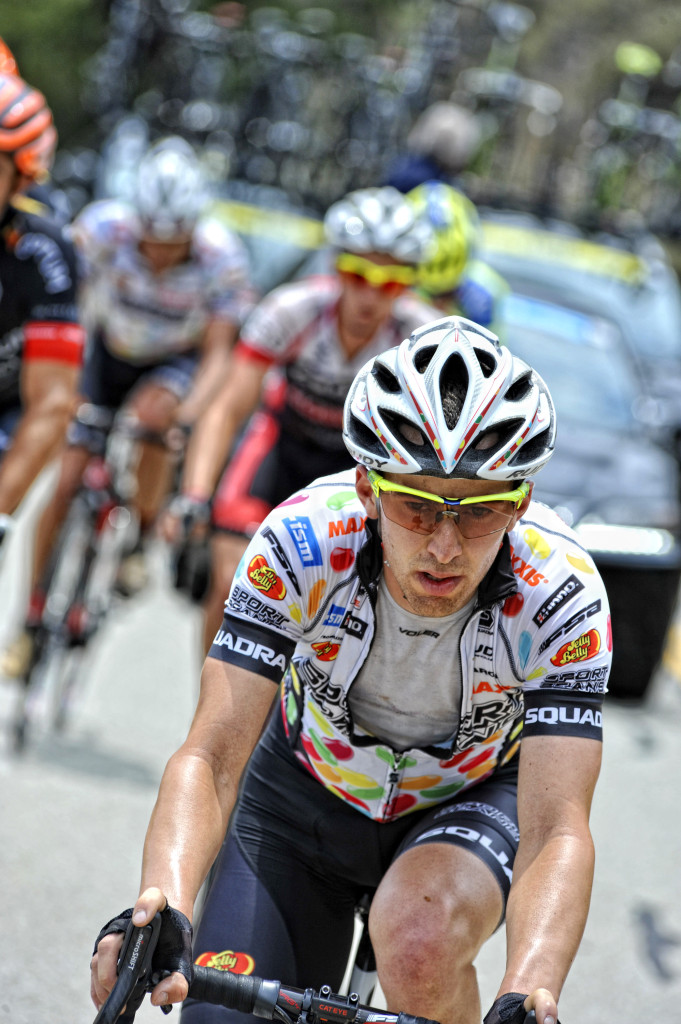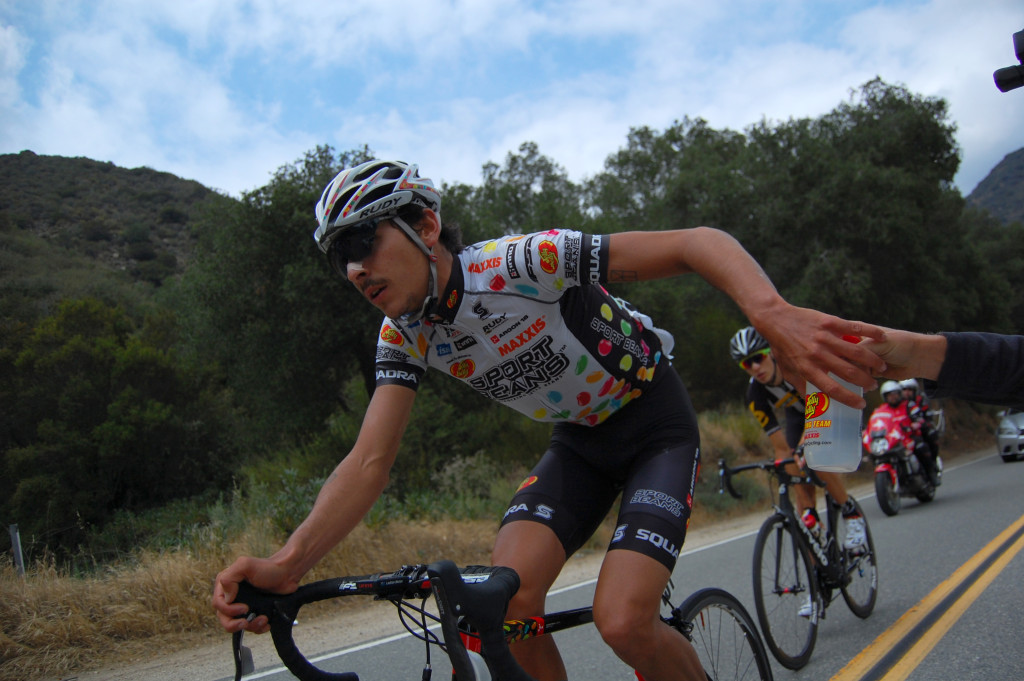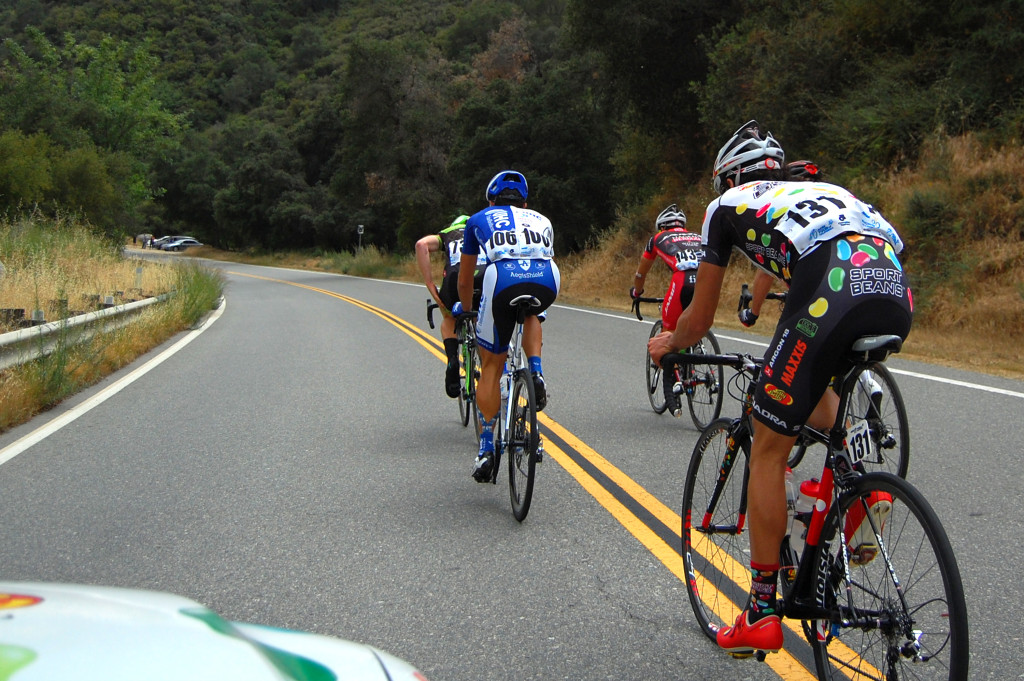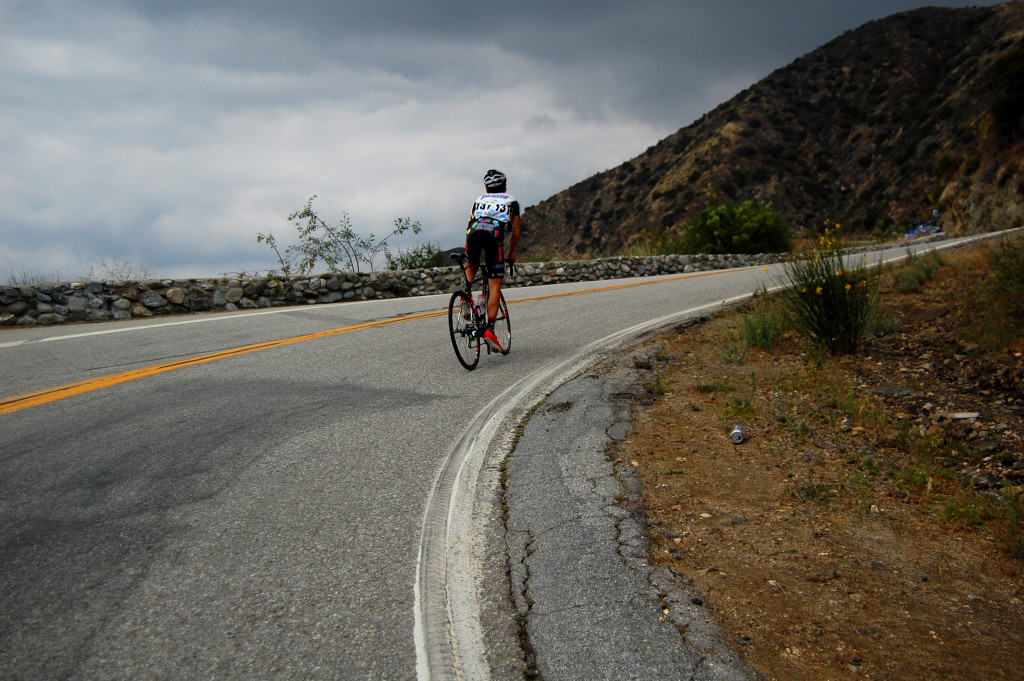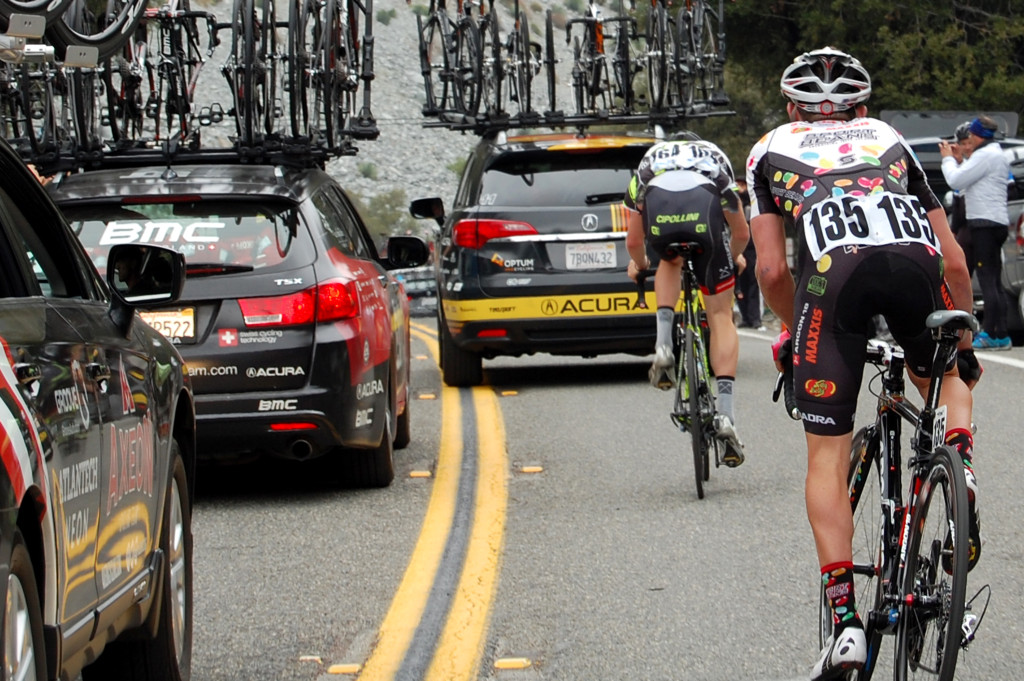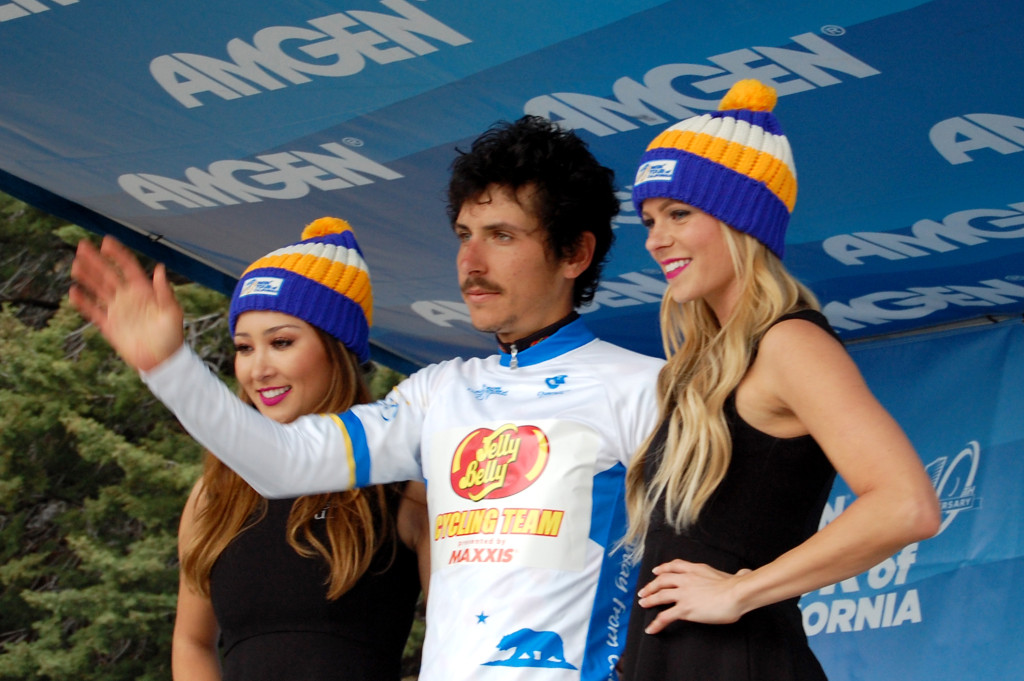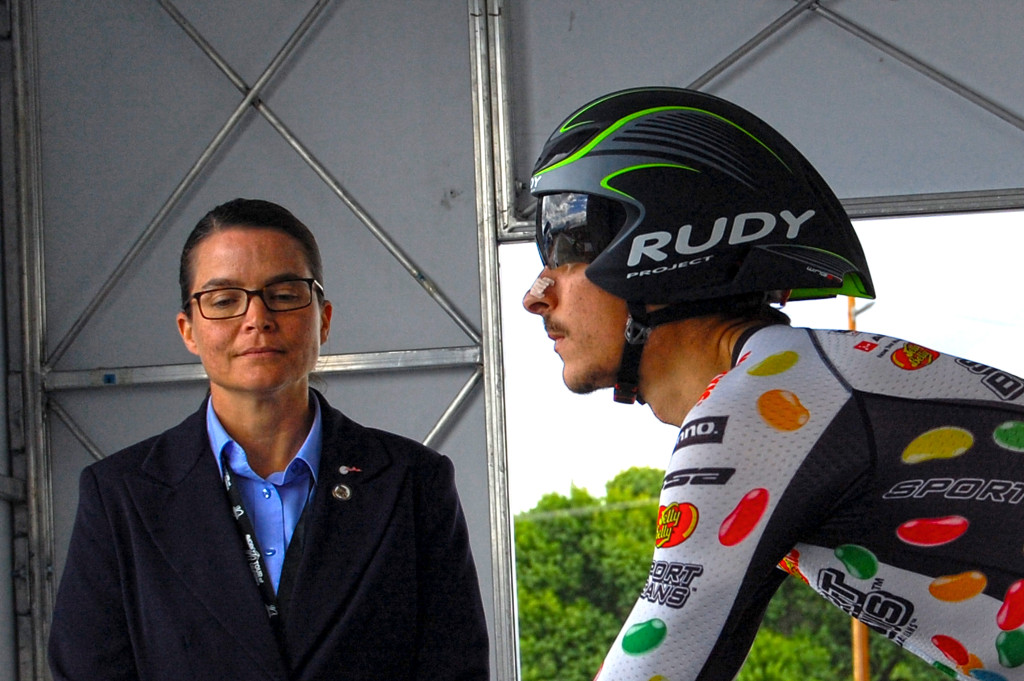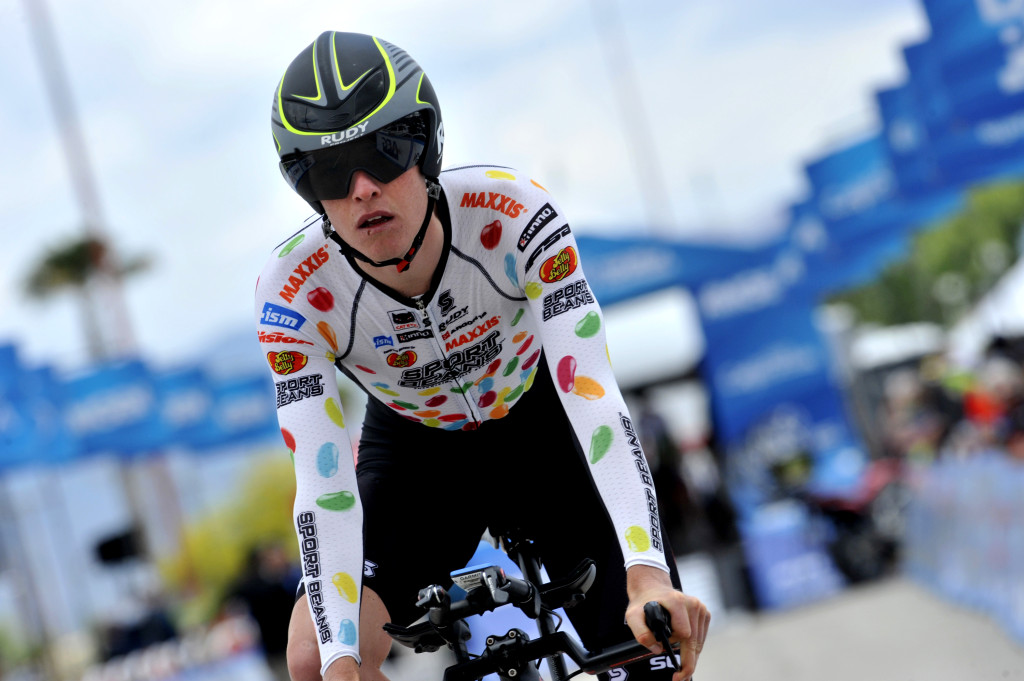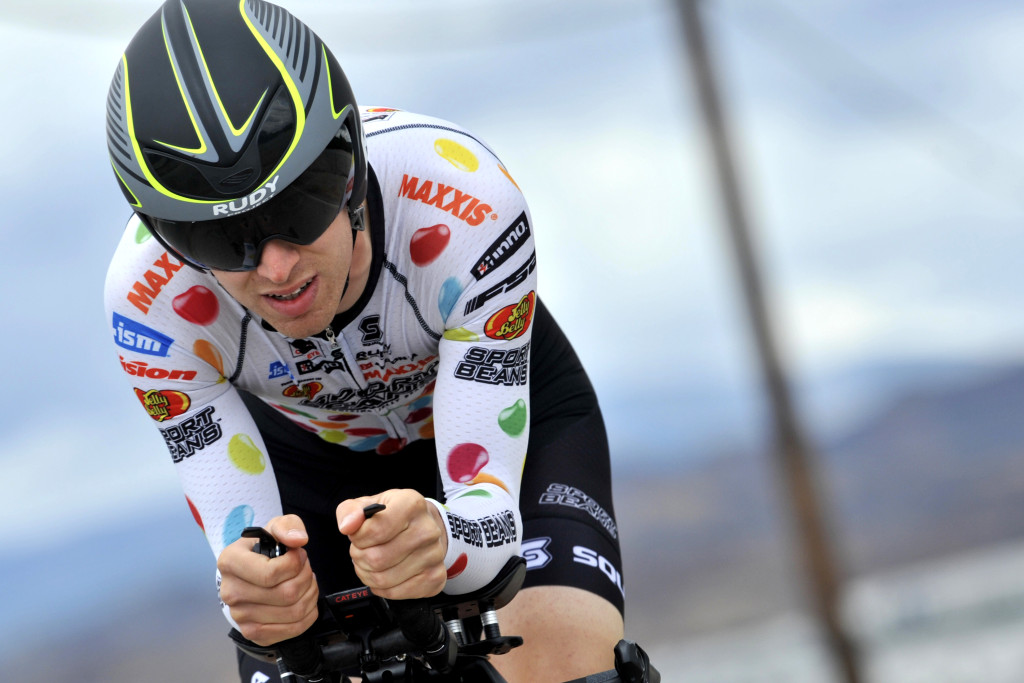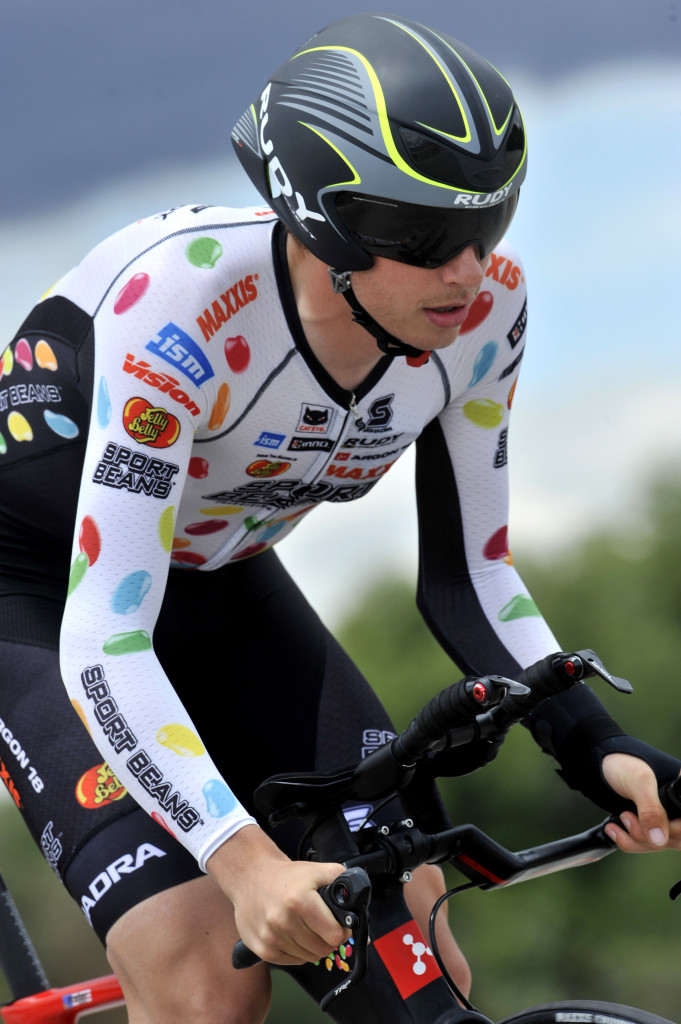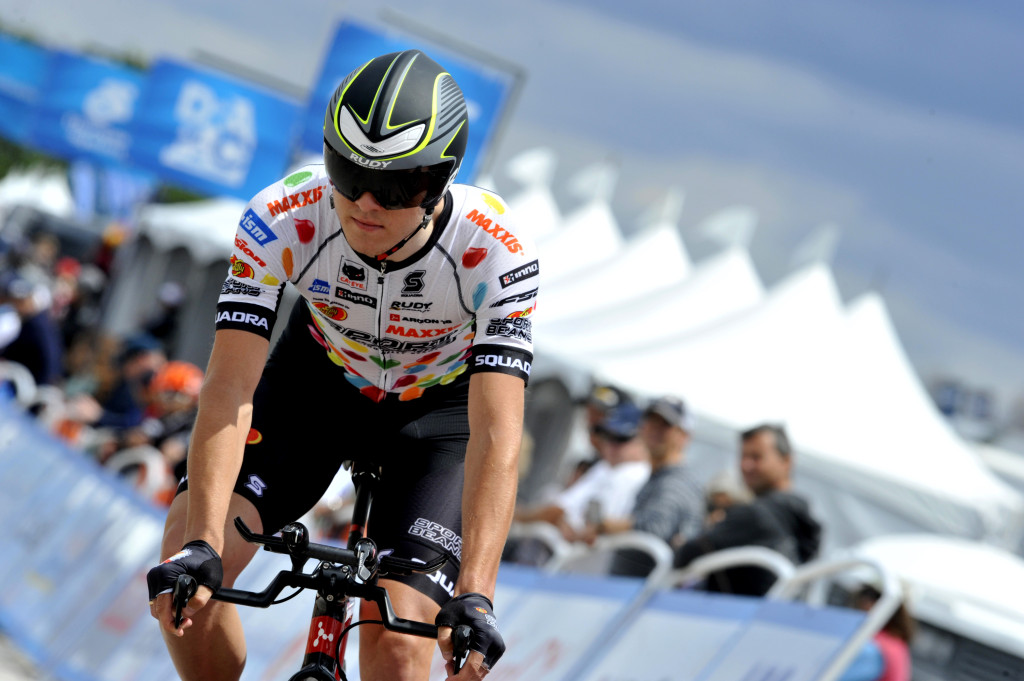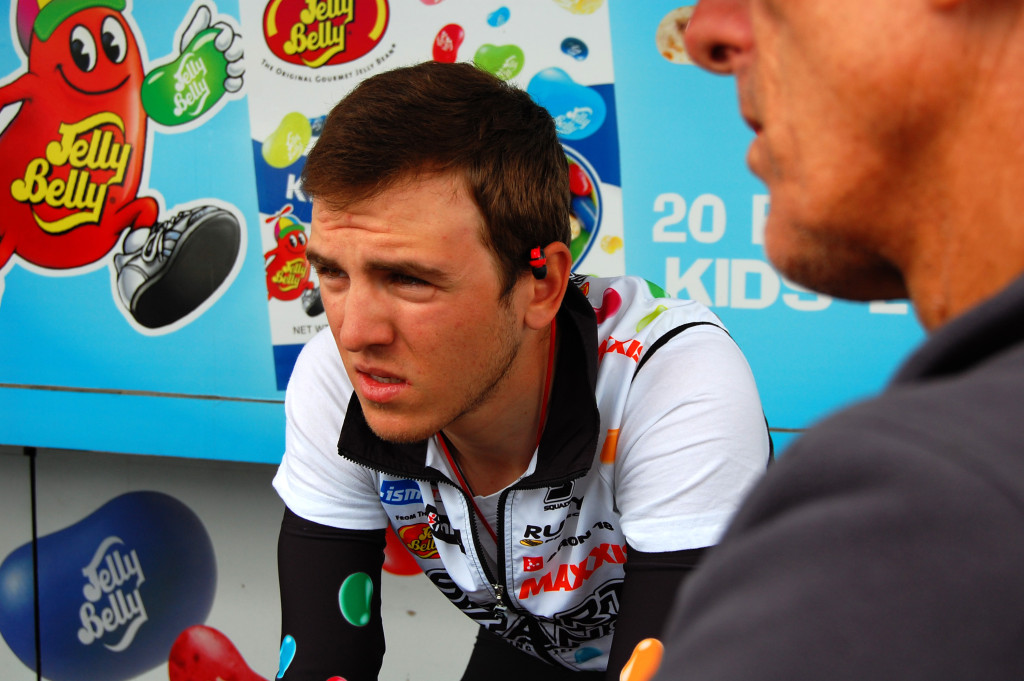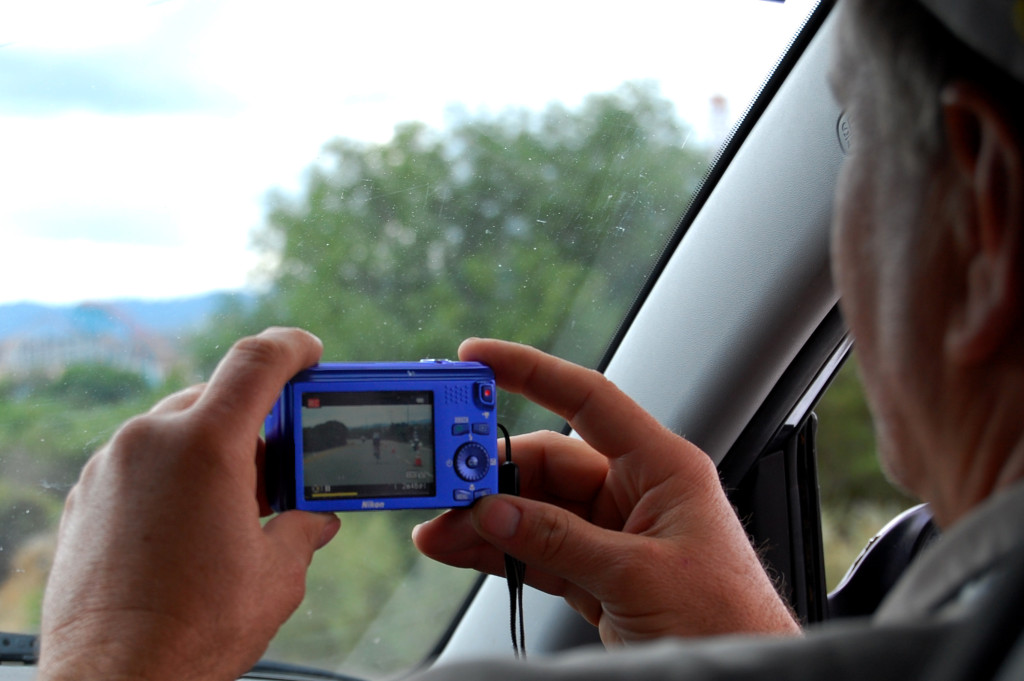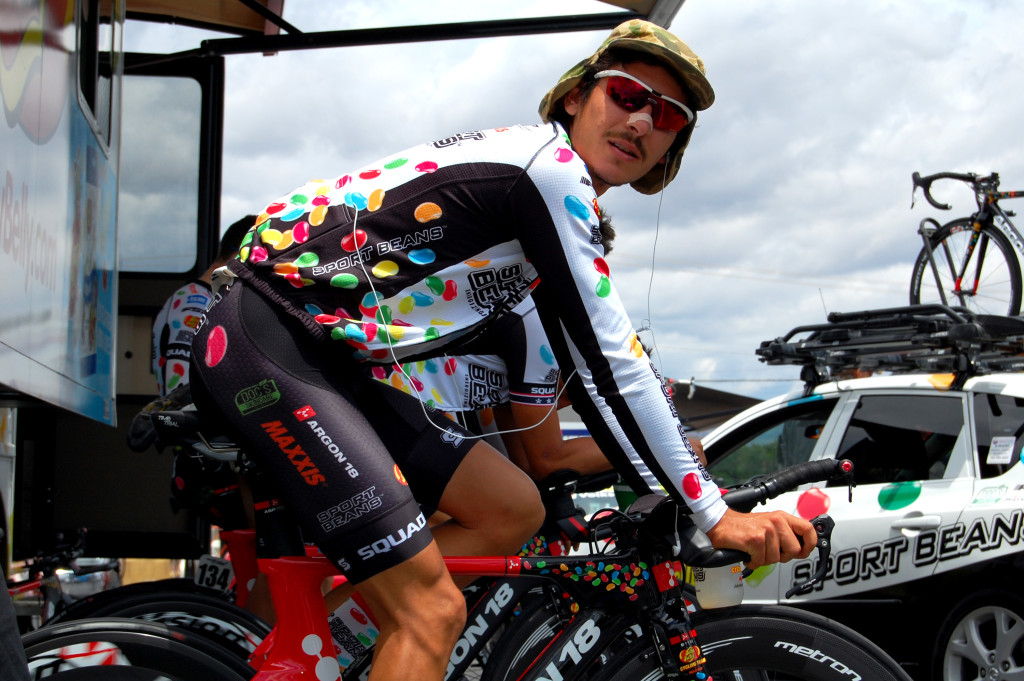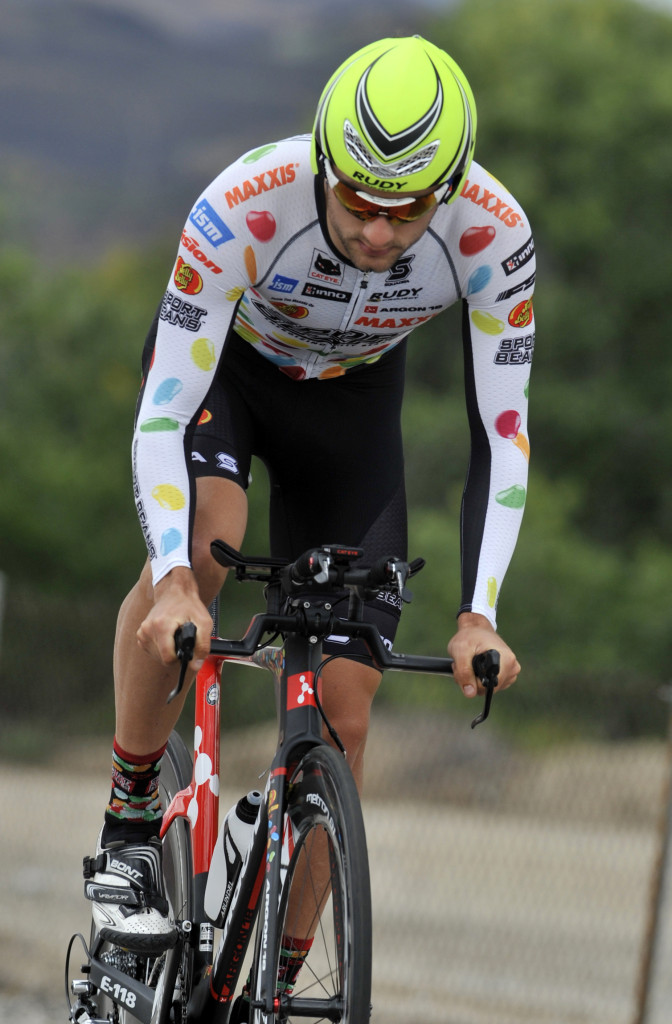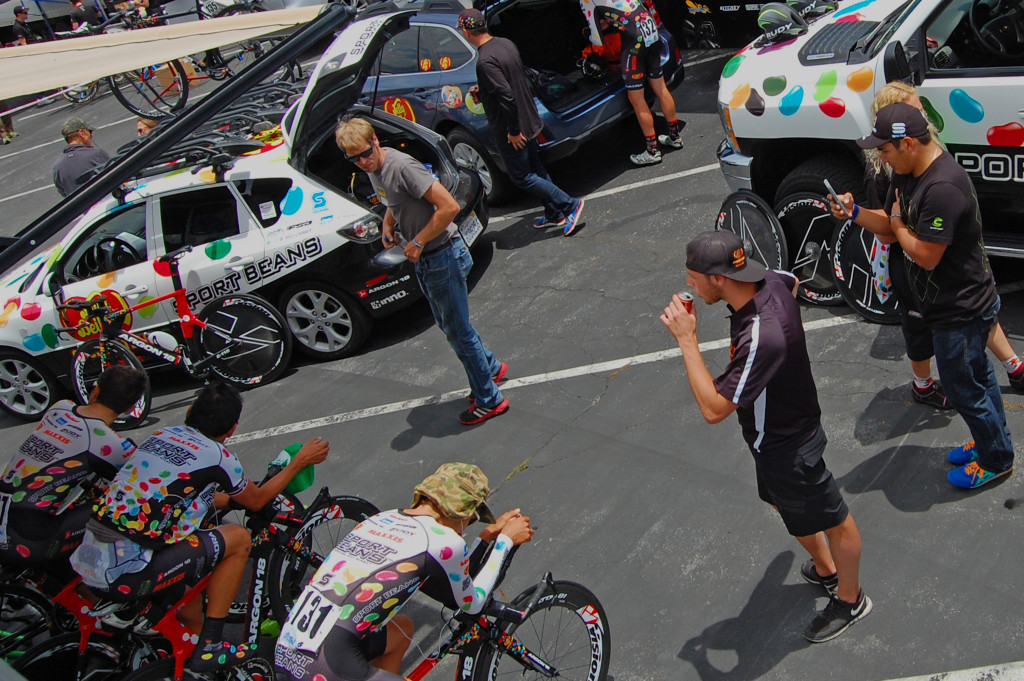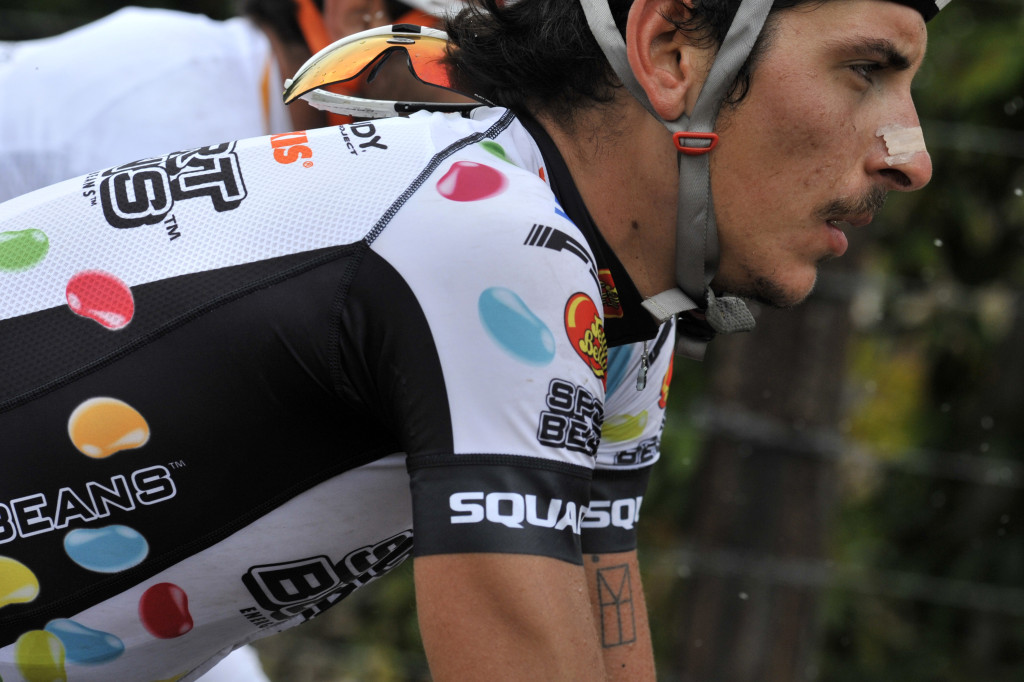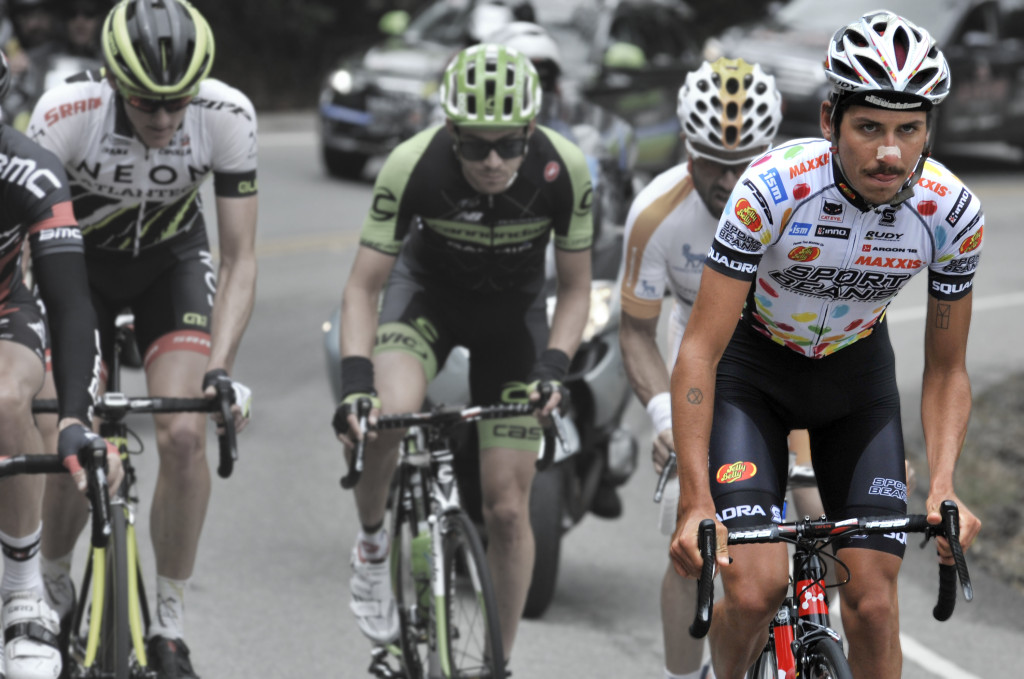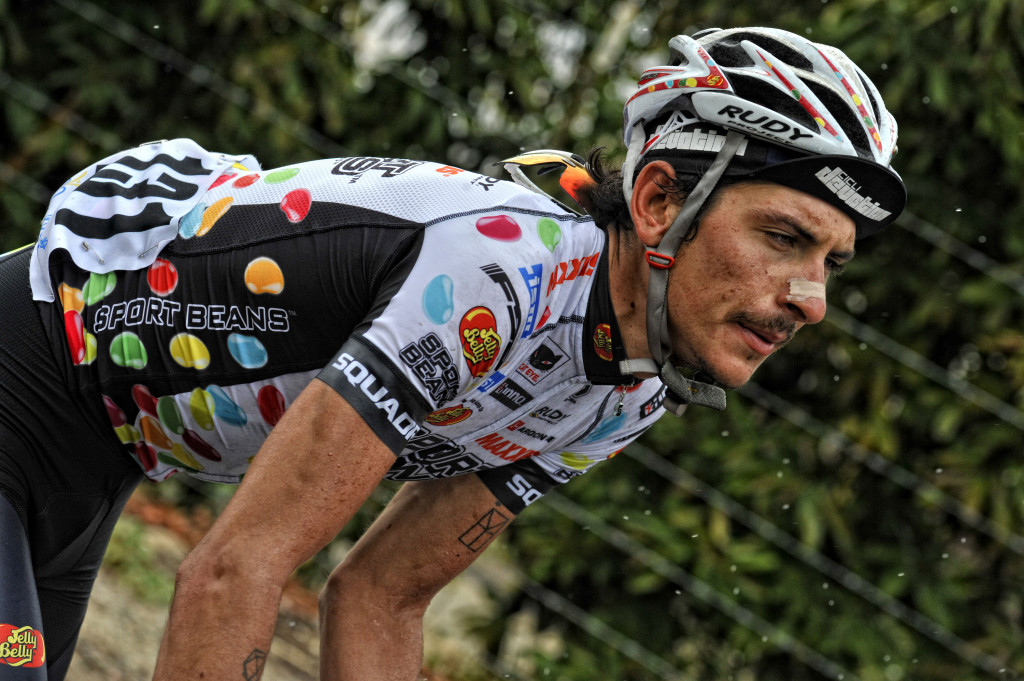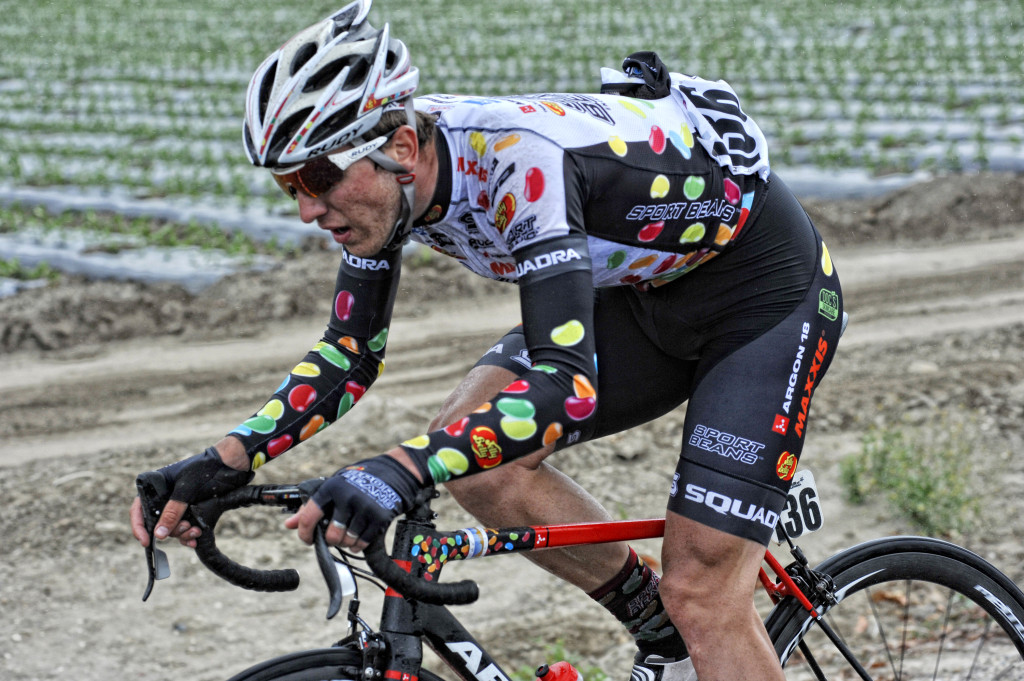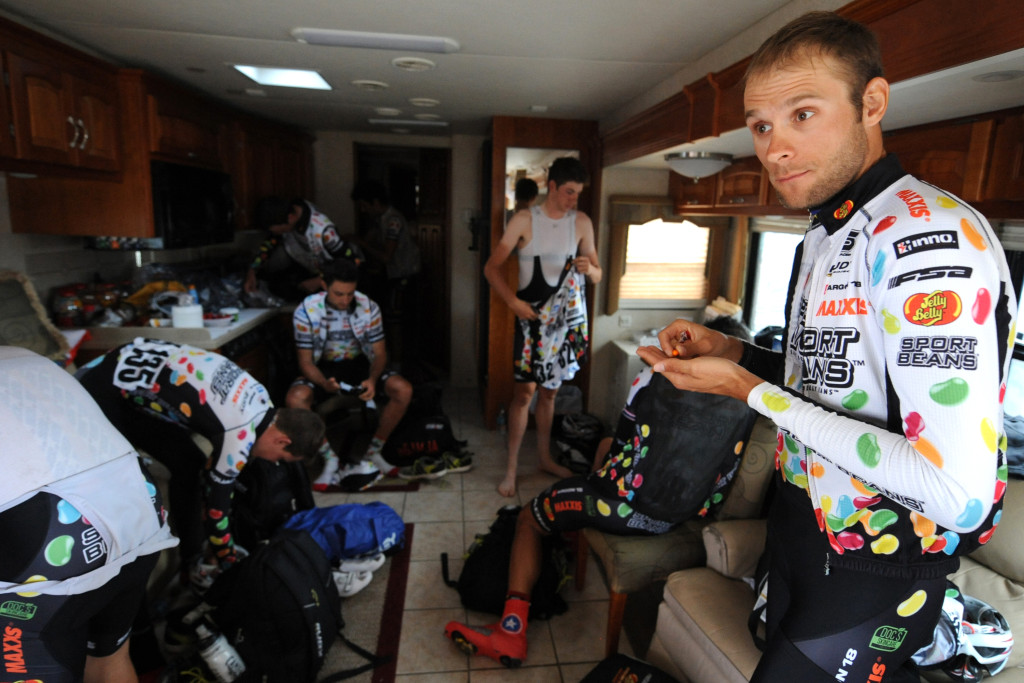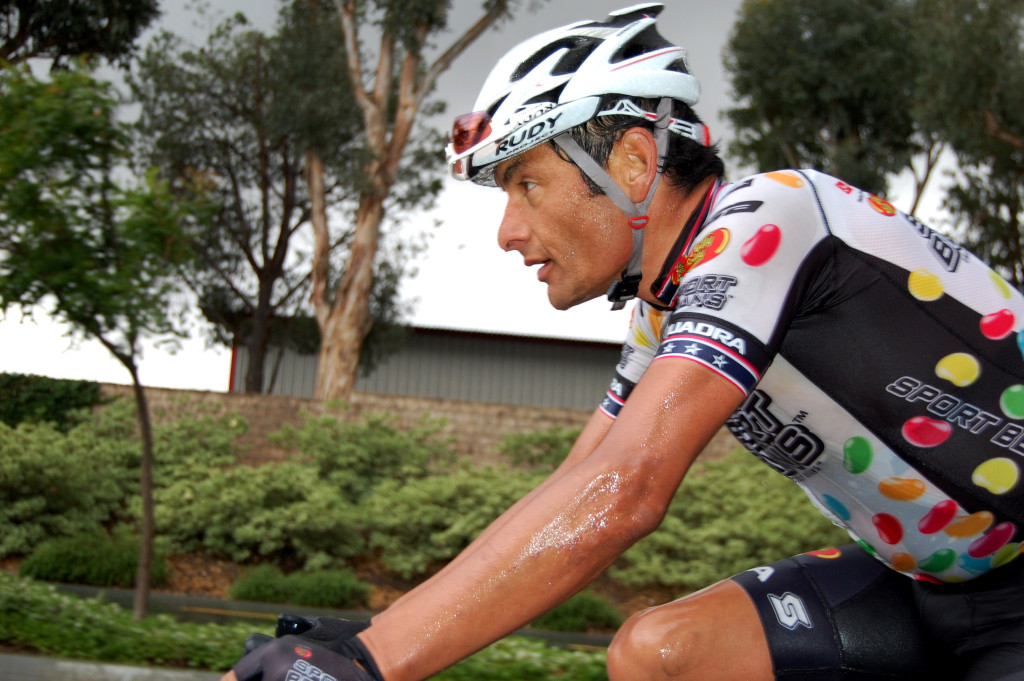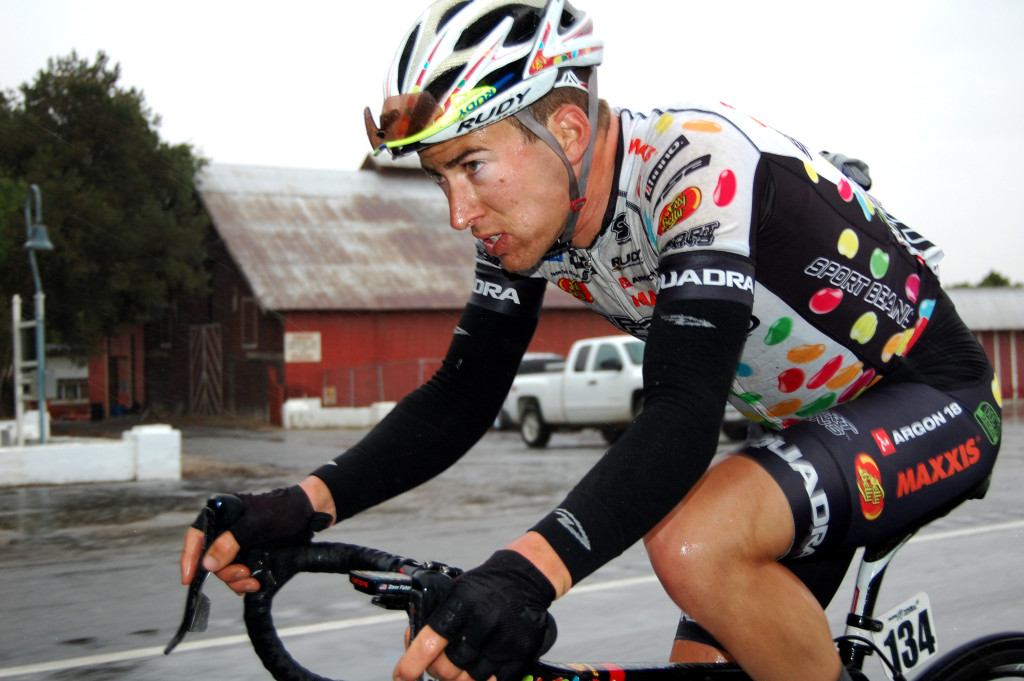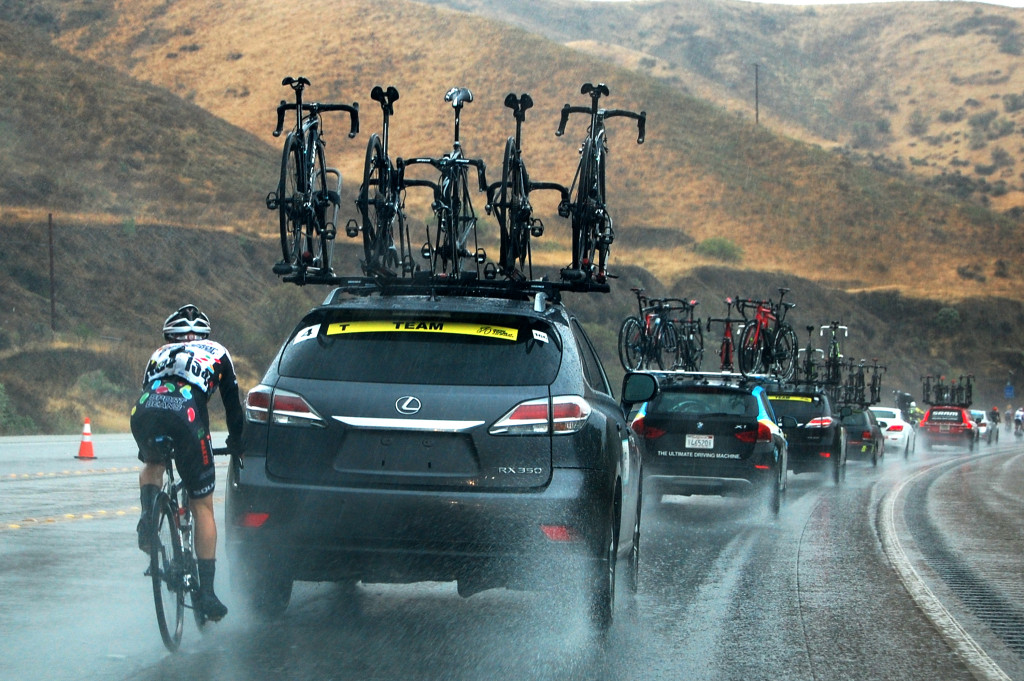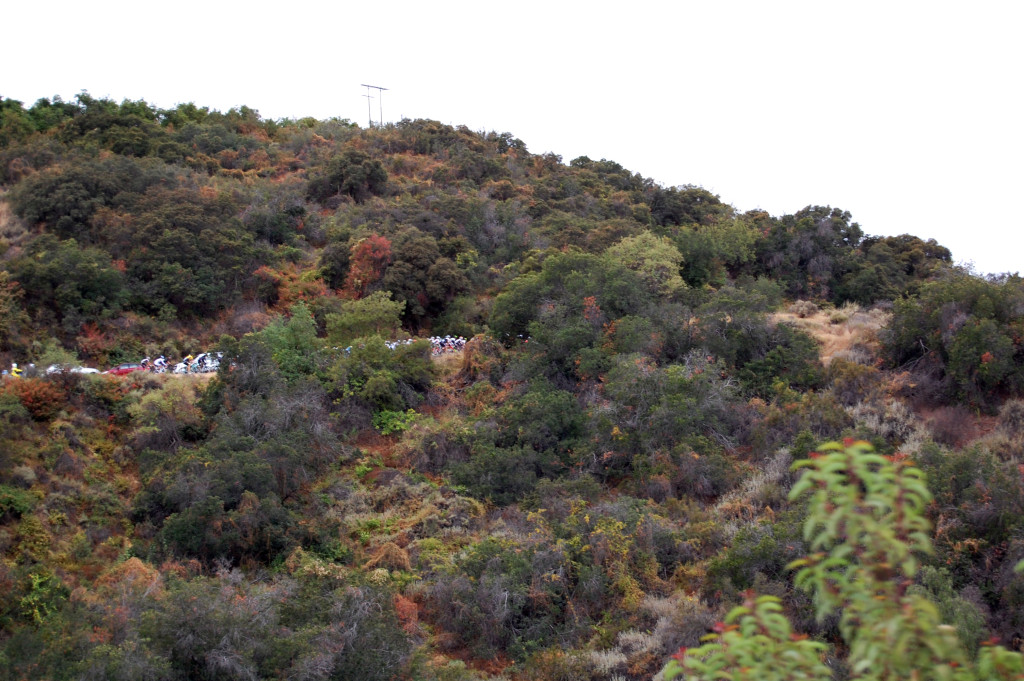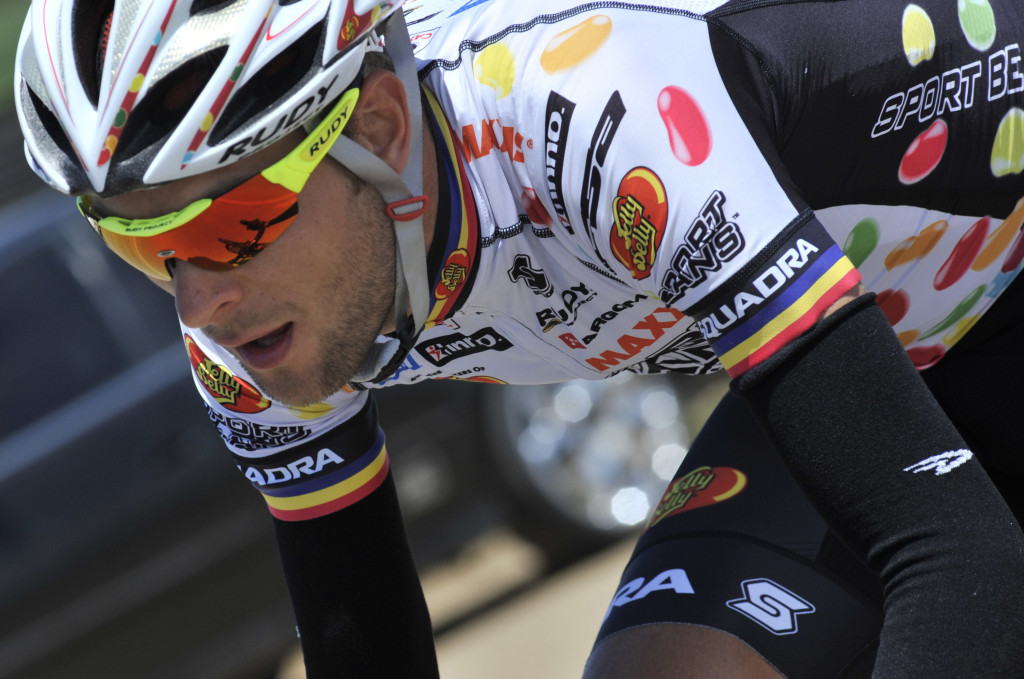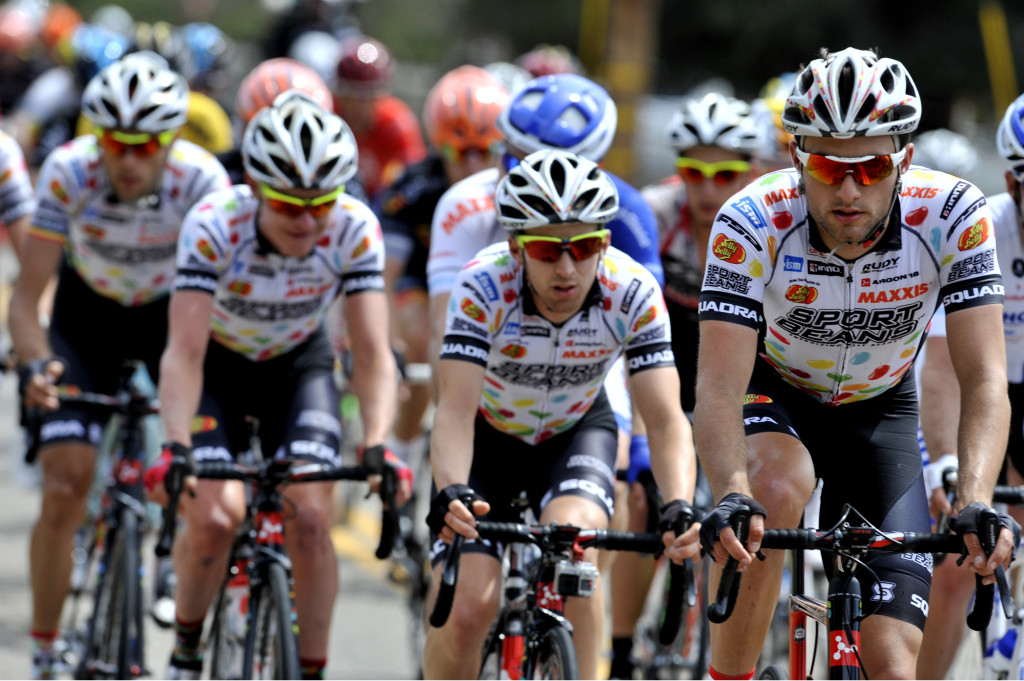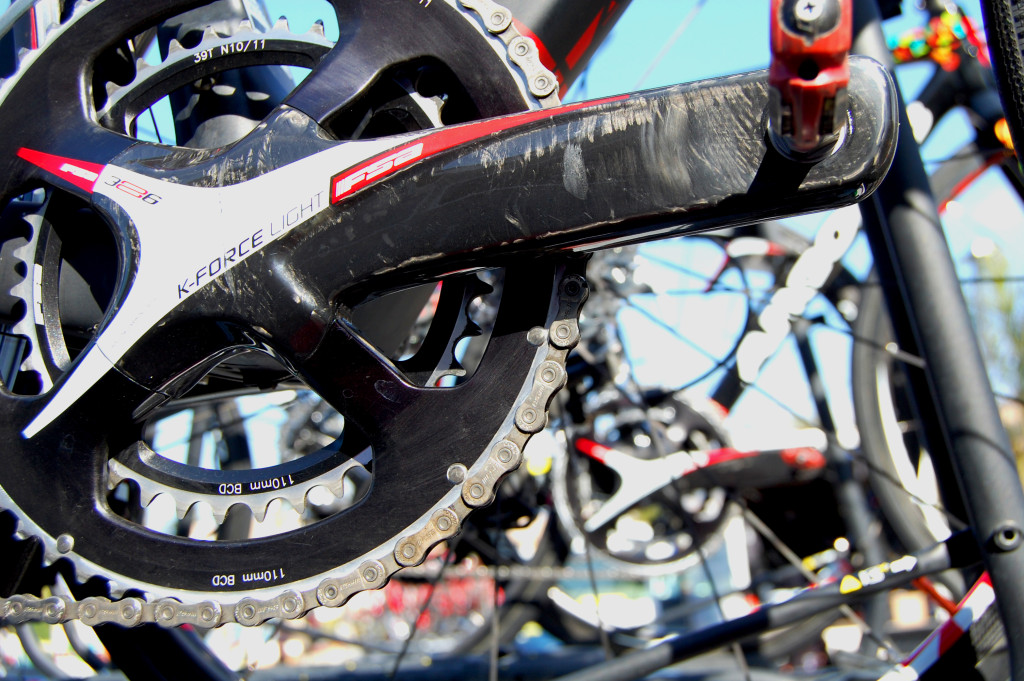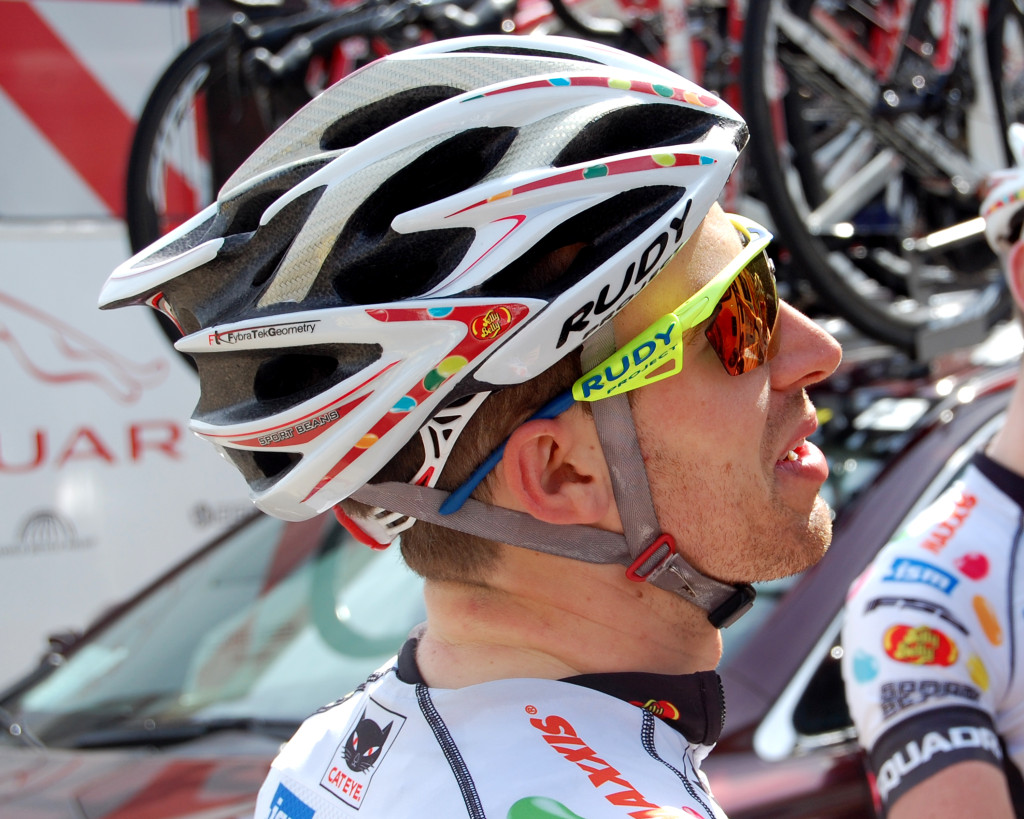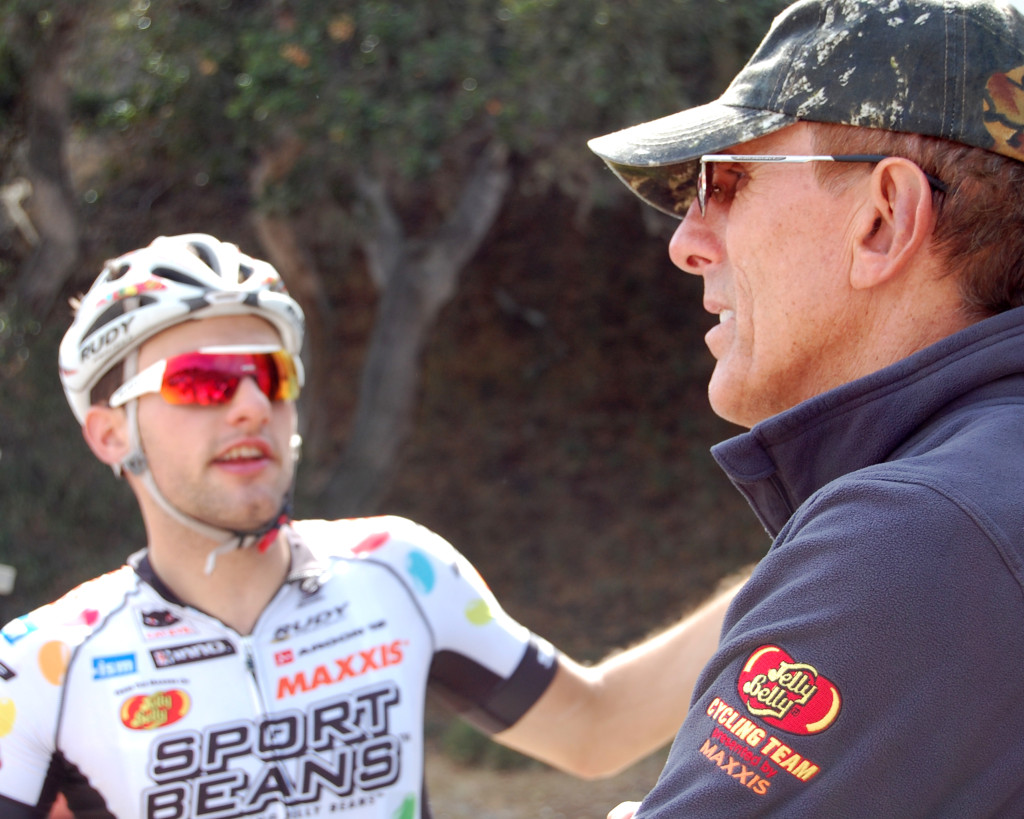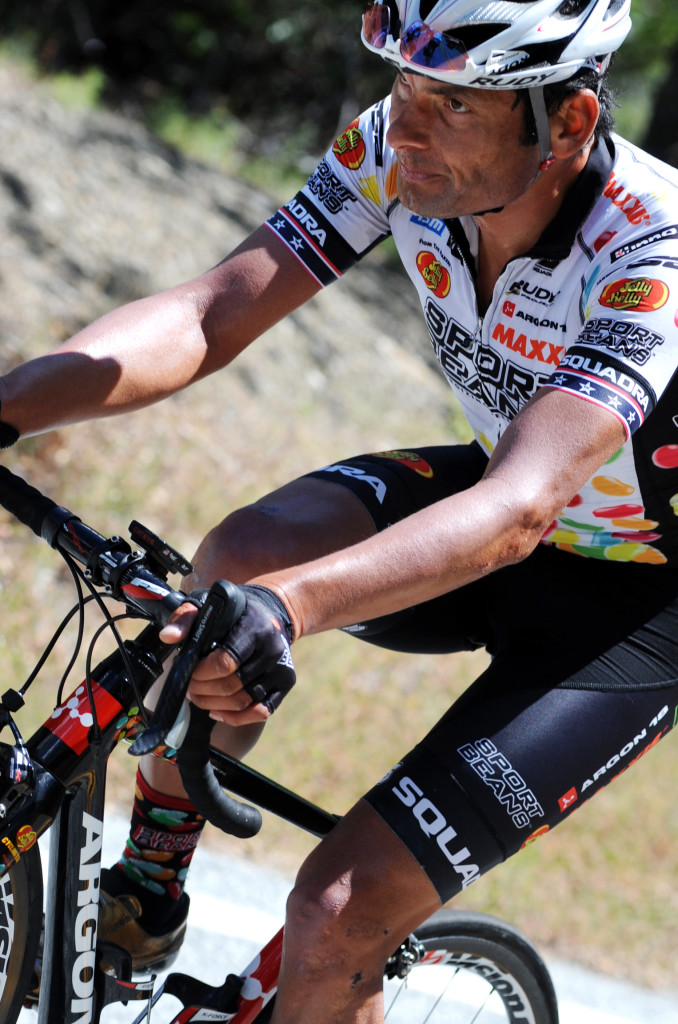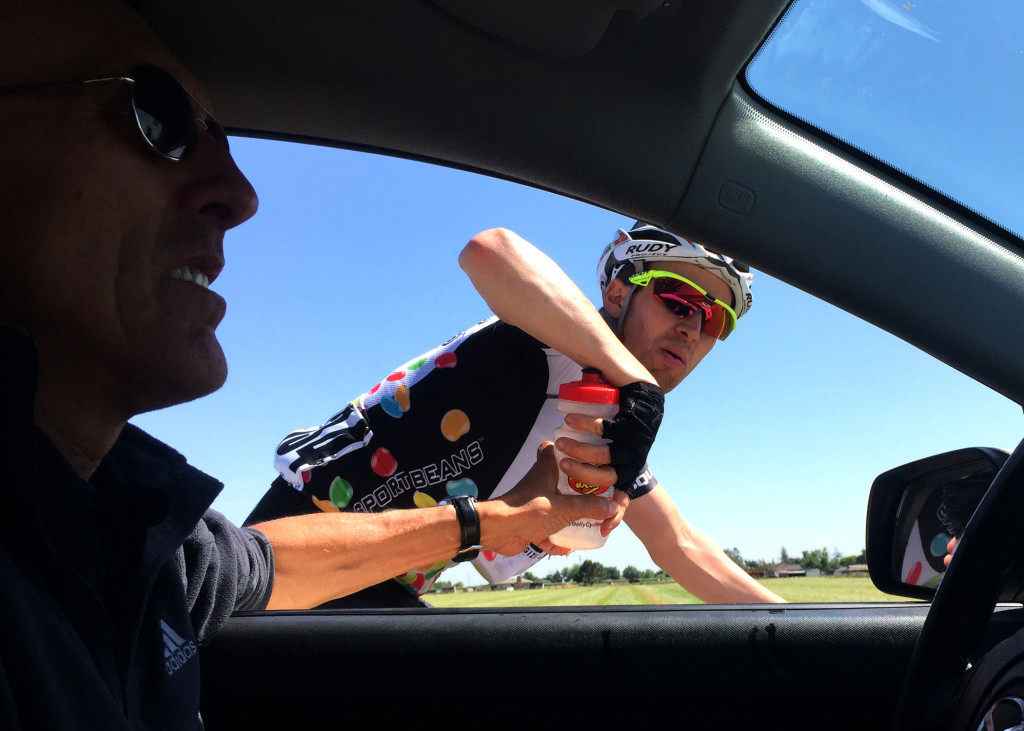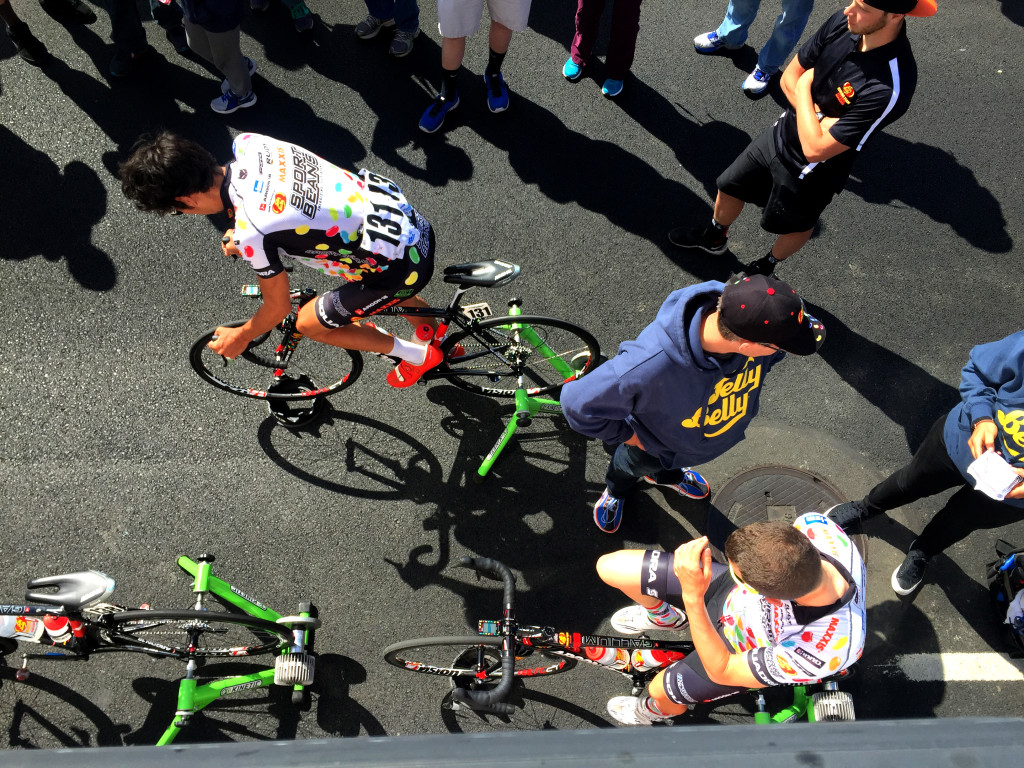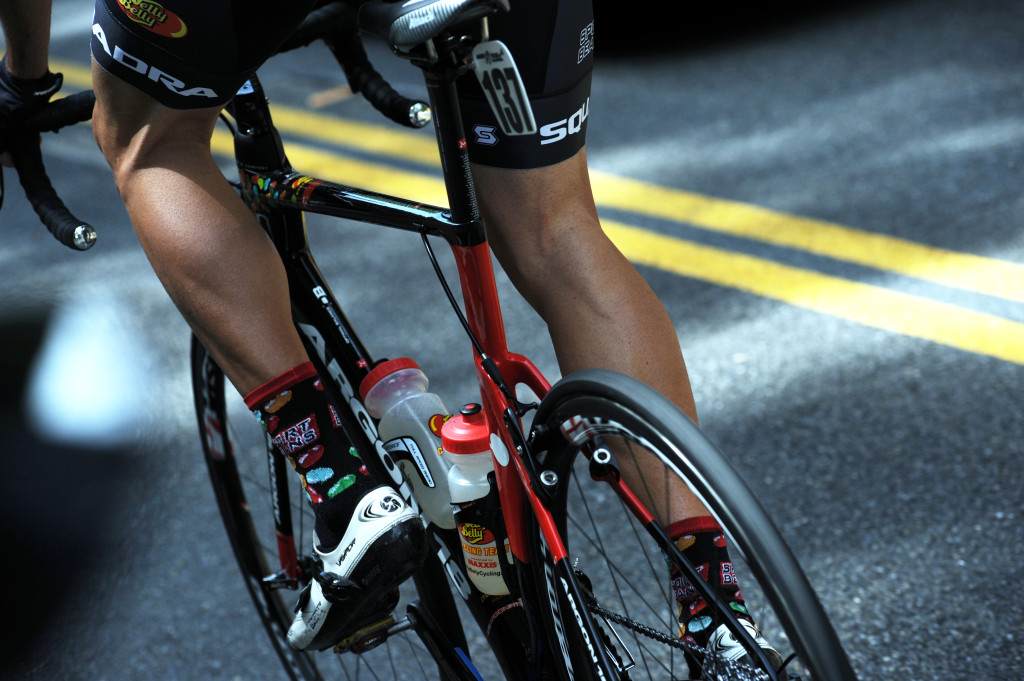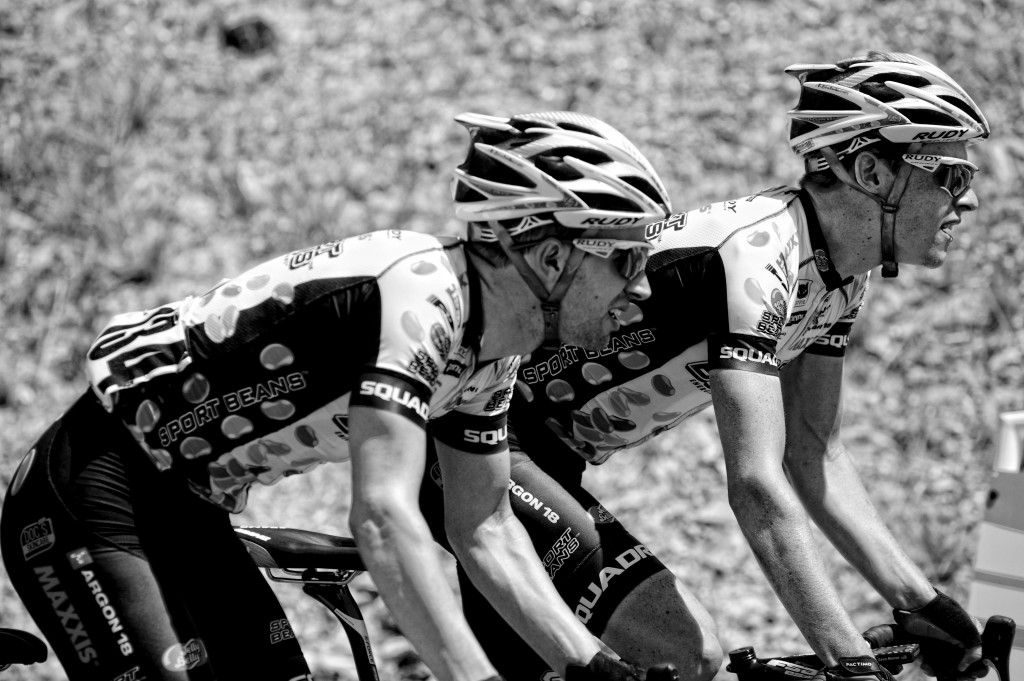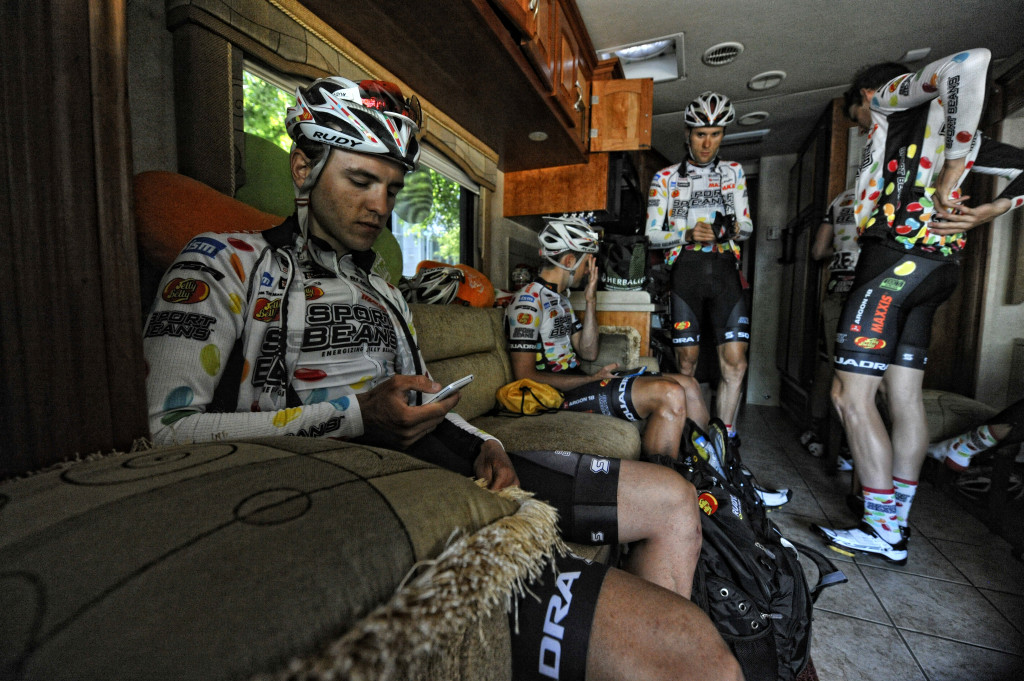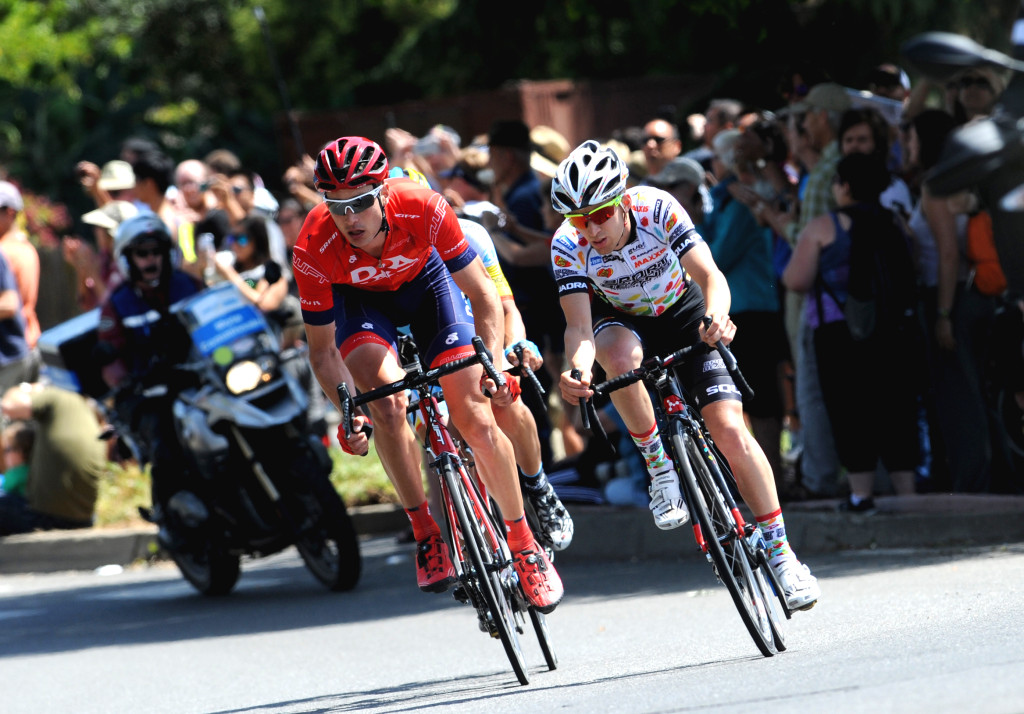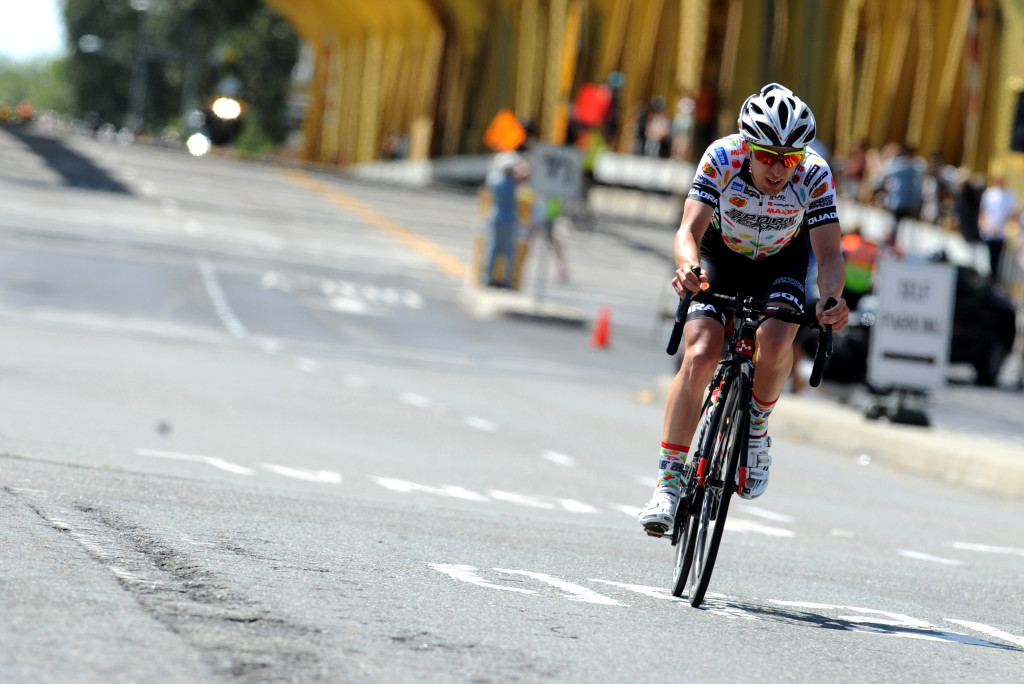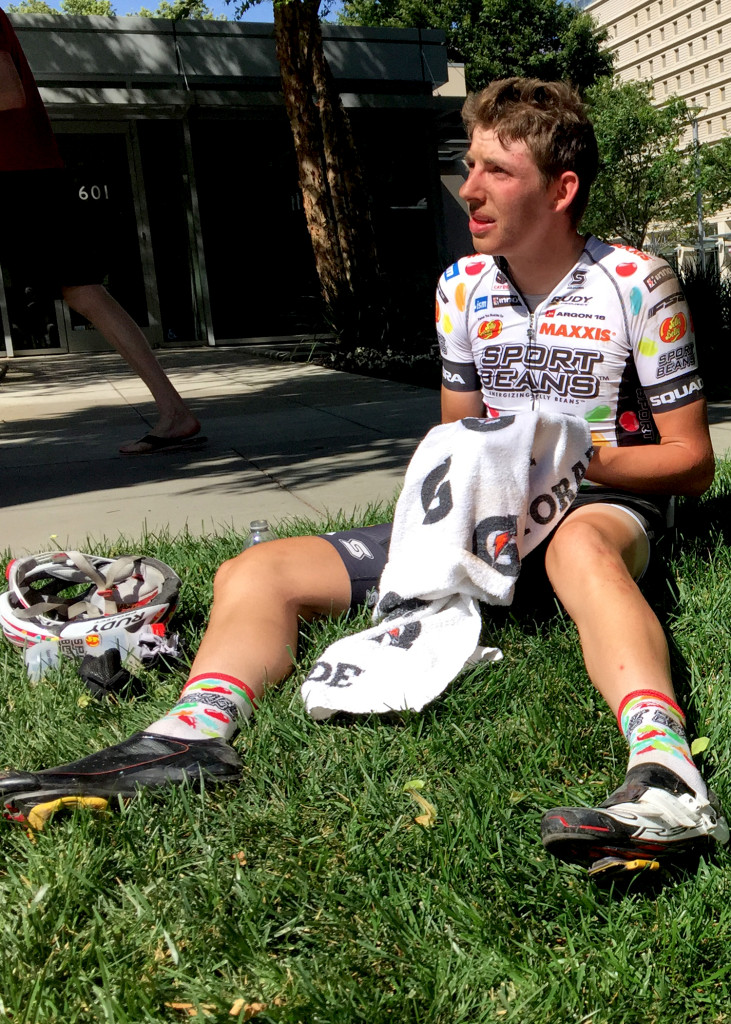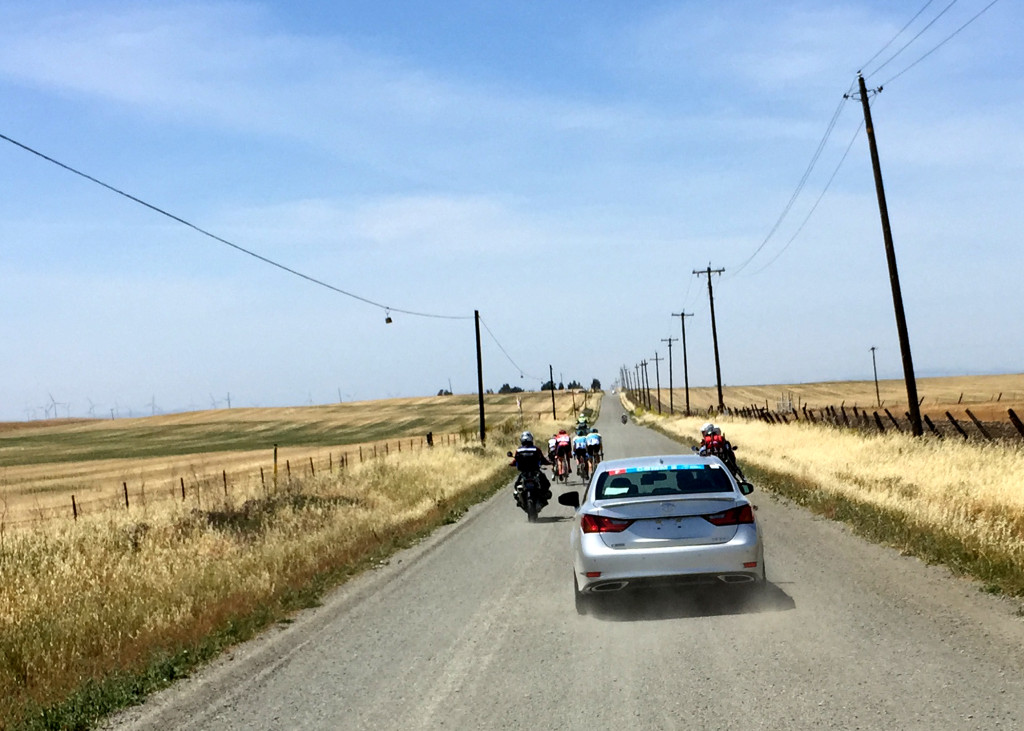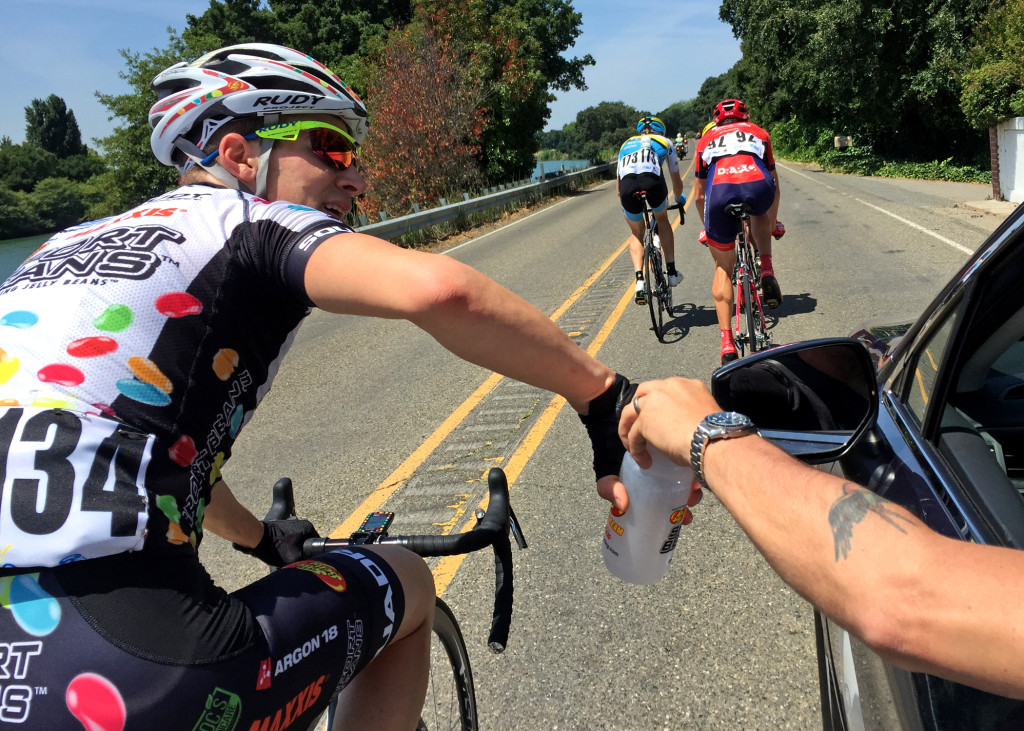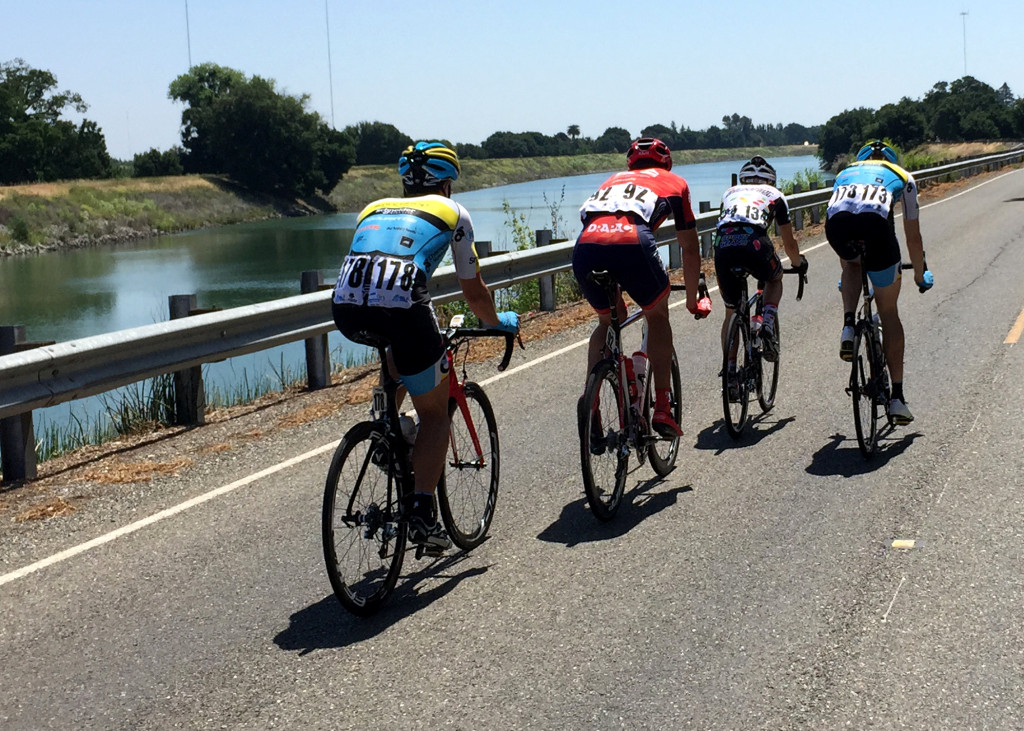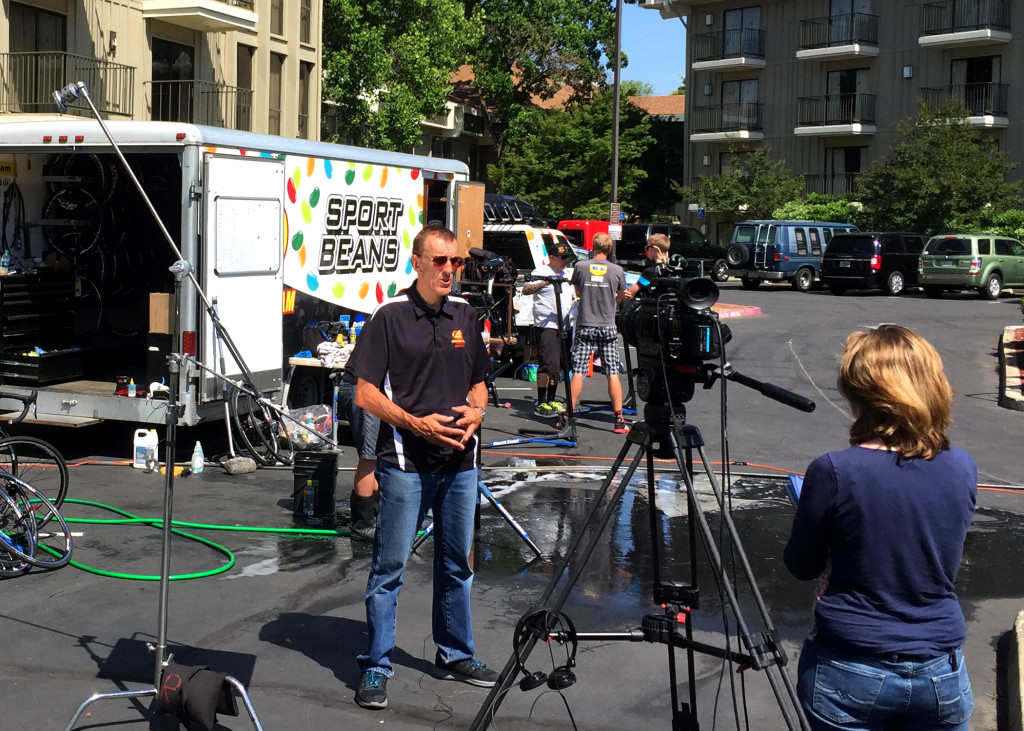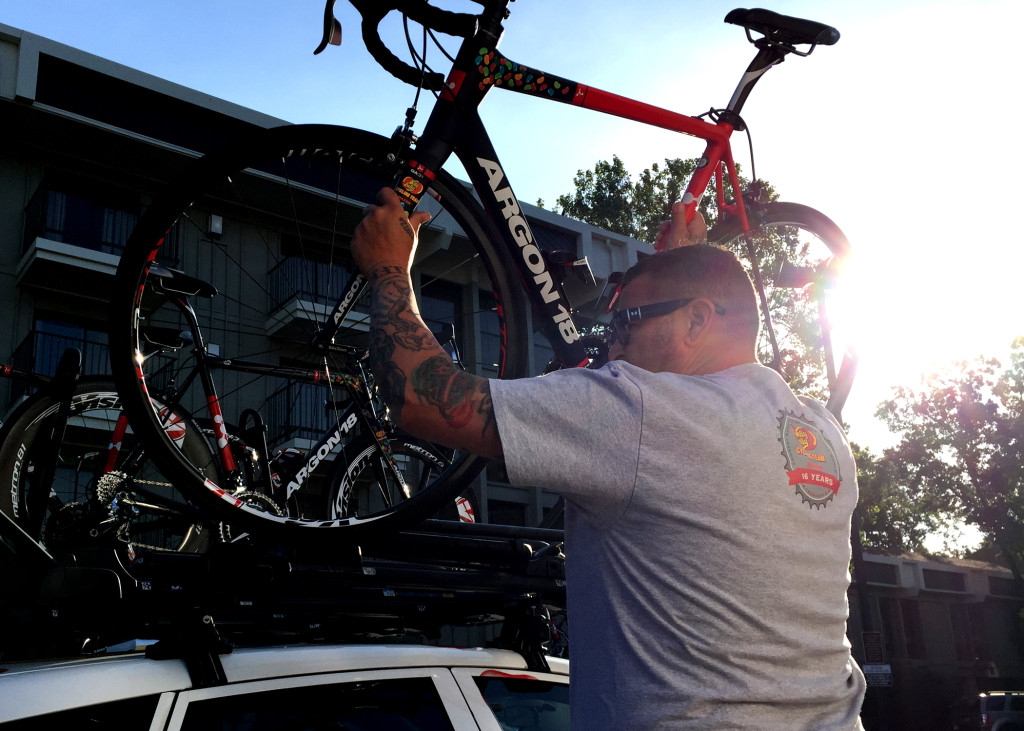We hear the questions, at the race and on-line, about medical care.
The Amgen Tour of California is such a large-scale rolling production, with more than 20 separate groups going from one town to another everyday – how could medical care be structured?
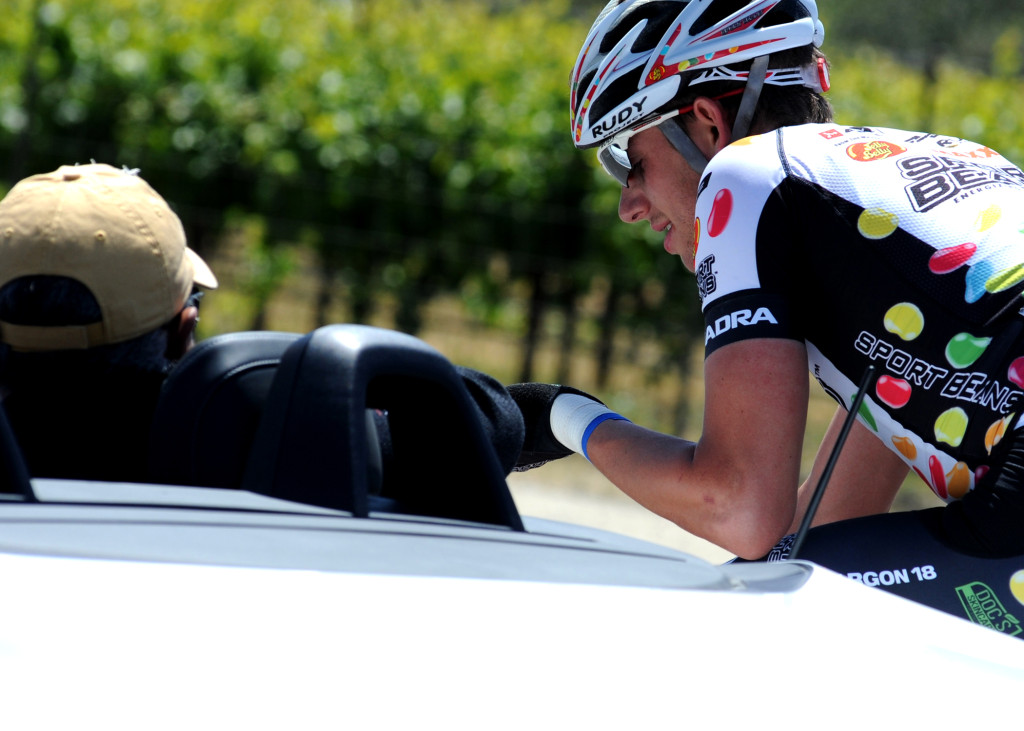
The second car behind the race is a convertible with a doctor in the back. There are several other cars in the caravan and behind it with doctors or nurses in them. They stop at any crash, and the doctor right behind the field can hold consultations with riders either as they rejoin the race after a crash, or when they drop back to talk. Think of it as having an on-call doctor at your work, a few feet away at all times, and available without appointment.
In each city that we visit, this same team sets up a medical suite. Its location is communicated via the Technical Guide that all teams receive before the start of the race. These are, to a normal doctor’s office, what the Jelly Belly Cycling Team’s trailer is to a normal bike shop. Everything is there and it is staffed by the best. This is where allergies are treated, follow-up visits happen, and less urgent matters are dealt with.
After Johnathan Freter’s tumble on Stage 1, his elbow was examined while he rode alongside the medical car and immediately after the stage. At the start of Stage 2, it was Freter’s wrist that was more painful. During the transfer after the stage, team staff were in contact with the medical team making the same journey. On arrival, the doctors let us know where they were set up.
The exam is a little different than at your family doctor, only in that it is very matter-of-fact. There isn’t a lot of time, and the doctors understand that the athletes know the general vocabulary of sports injury. In Freter’s case, the doctor said, “You are most tender here, and I’m not concerned about that at all. You are a little tender here, but that’s a more likely location for a chipped bone or fracture…”
Calls were made to local hospitals and urgent care facilities and one was located that could get the correct x-ray done and return the results fastest. Team staff took Freter over and came back an hour later with a disc of x-ray images. All the while, the medical team are tending to other riders and their own logistics, including dinner. Three doctors came back out to the suite to read the film, and it confirmed their suspicion.
Freter’s injury is not one that mandates stopping – the doctors will only force a rider to stop in the case of concussion or more severe head trauma. He started stage 3 and rode through a great deal of pain, unable to brake with his left hand on some of the most technical and fastest descents of the entire race.
Johnathan has had a restful night and will have a follow-up visit with medical this morning. At this point, the rest of the season is as important as the rest of the race. His pressing onwards yesterday should earn him The Team’s MVP award this morning – we will see.
